70 Years of History
1954 - 2024

1954 - 2024
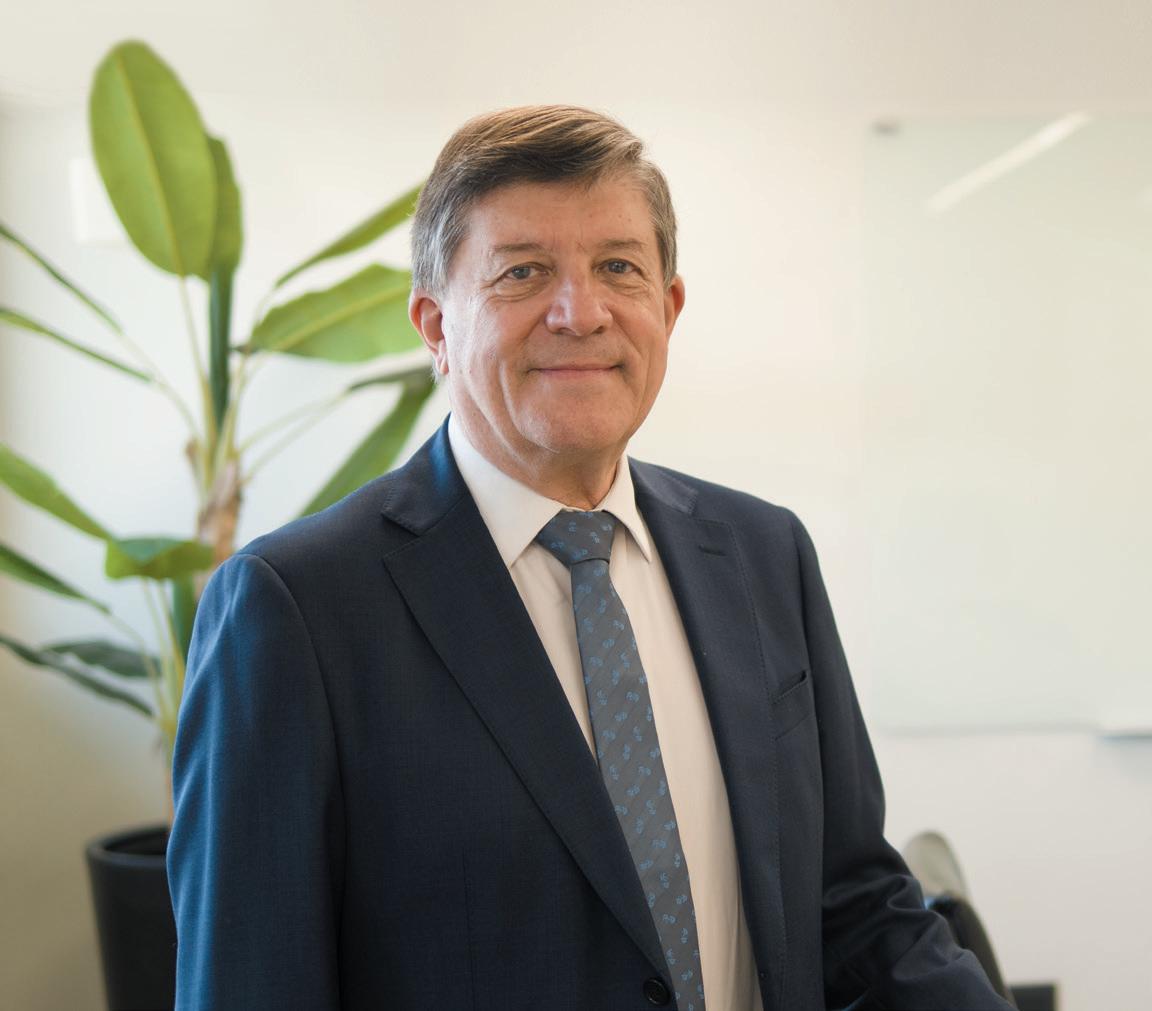
It is with great satisfaction that I share with you this book that tells a unique story: that of a company that began as a family business and, over time, has managed to transform itself into a solid institution with a future that extends beyond its founders.
This account reveals how, throughout its history, this company has emerged and evolved, allowing us to understand how that small workshop, founded more than 70 years ago, became the company we know today.
Over the last two decades, our organization has undergone a profound transformation. We have gone from being a metalworking factory dedicated to the manufacture of pumps to becoming an engineering company specializing in the design of integrated solutions that are increasingly sophisticated and tailored to the demands of a dynamic and challenging environment.
This book is also a tribute to those who have made this evolution possible: our team. Several generations of employees who, with professionalism, commitment, and vision, have made the complex possible and turned the possible into value for our customers.
Beyond technical data and business milestones, these pages reflect a deep conviction: our purpose is clear. We move what matters with sustainable solutions for the planet.
In this interconnected world undergoing digital transformation, we are developing intelligent operating platforms that will redefine the relationship between companies, their teams, and their processes. At the same time, we are making decisive progress in sustainability and internationalization, always with the ambition of growing without losing the soul of a boutique company: one that adapts with precision and delivers with excellence.
This book is, ultimately, an invitation to look ahead. To understand that the future of applied engineering lies in integrating capabilities, people, and technology with a clear purpose. And that purpose is none other than to create real value for those who trust us, for the industries that drive development, and for a planet that demands responsible, sustainable, and long-term solutions.
This book is also a living testimony.
And a tribute:
To those who dreamed of the impossible.
To those who built with their hands, minds, and hearts.
To those who believed that a company can be much more than its product: it can be a legacy, a community, a driver of change.
I invite you to explore these pages with the same passion with which they were written. And to continue walking alongside us toward a future that we not only want to achieve, but also build together.
Ricardo Vogt Baeza Director

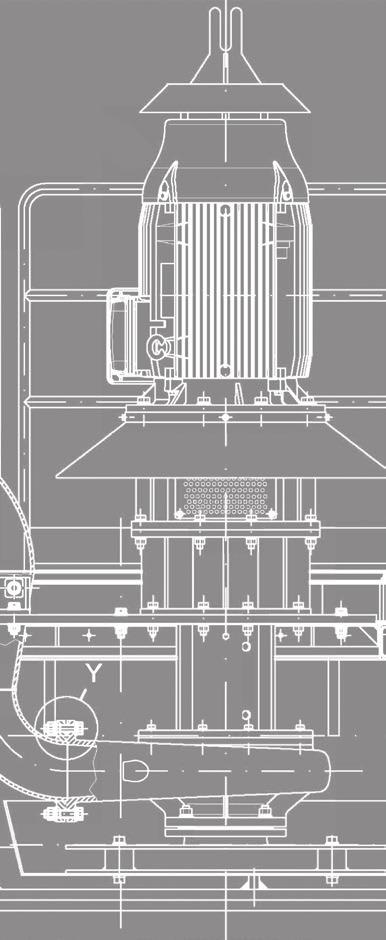
This section introduces the people who have been key to VOGT's development and consolidation throughout its history.
It includes images of the founders, whose vision and entrepreneurial spirit gave rise to the company in 1954, along with the current leadership structure composed of board members, shareholders, and the executive team. Through their various responsibilities, all of them have contributed to the company's sustained growth, ensuring management aligned with the strategic objectives and values that have guided VOGT for more than seven decades.

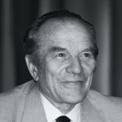













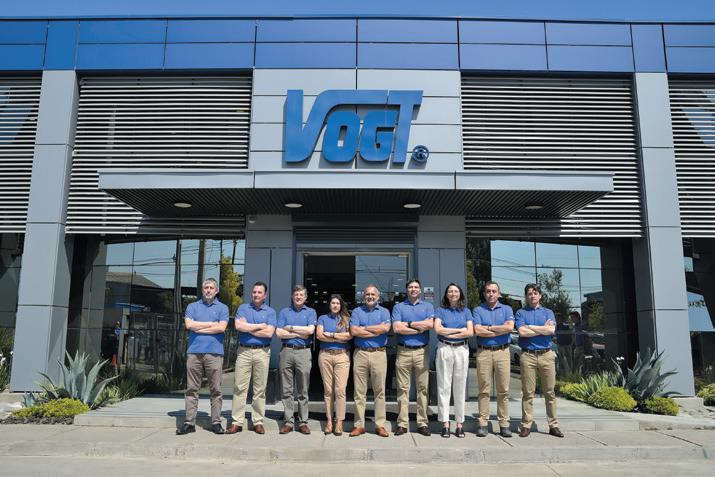
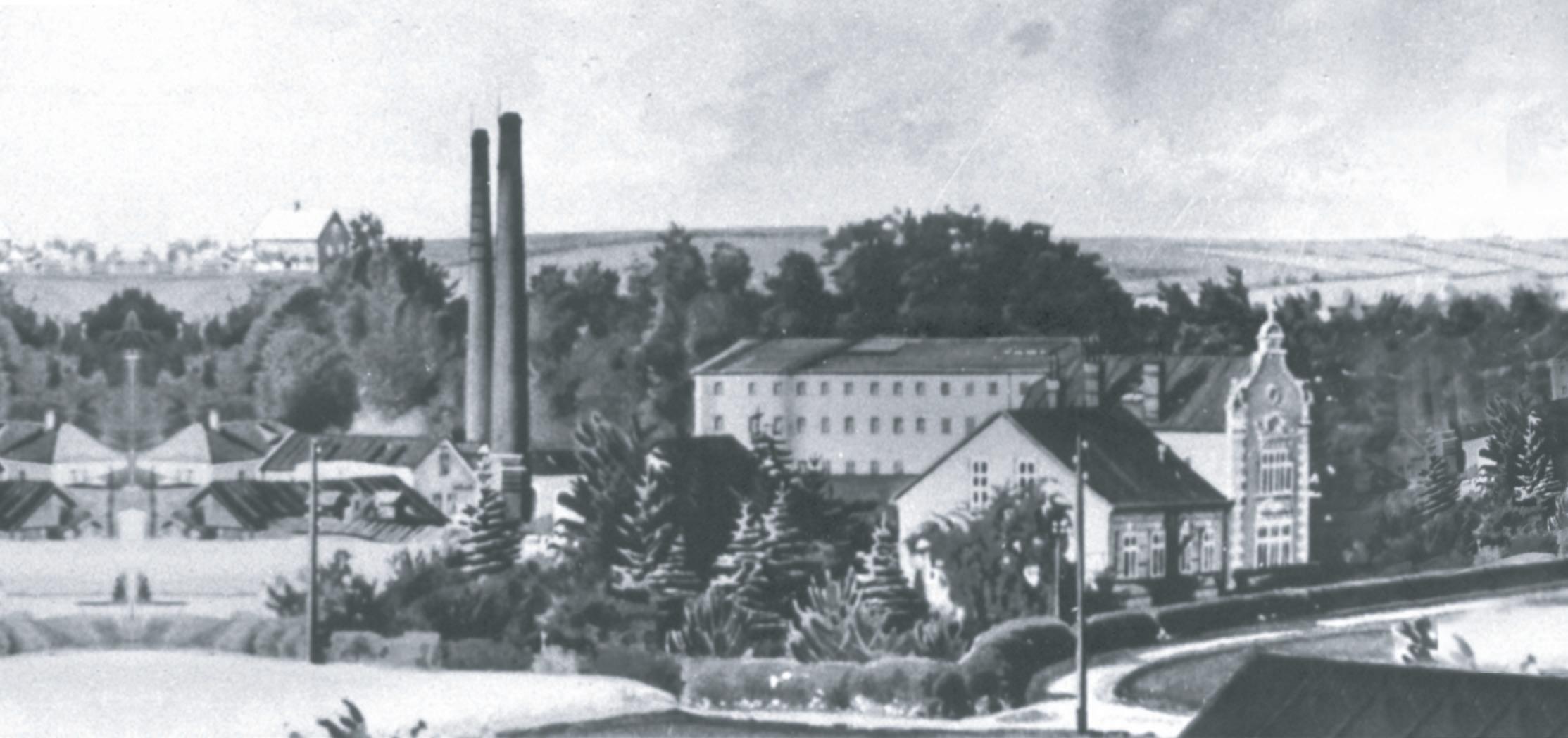



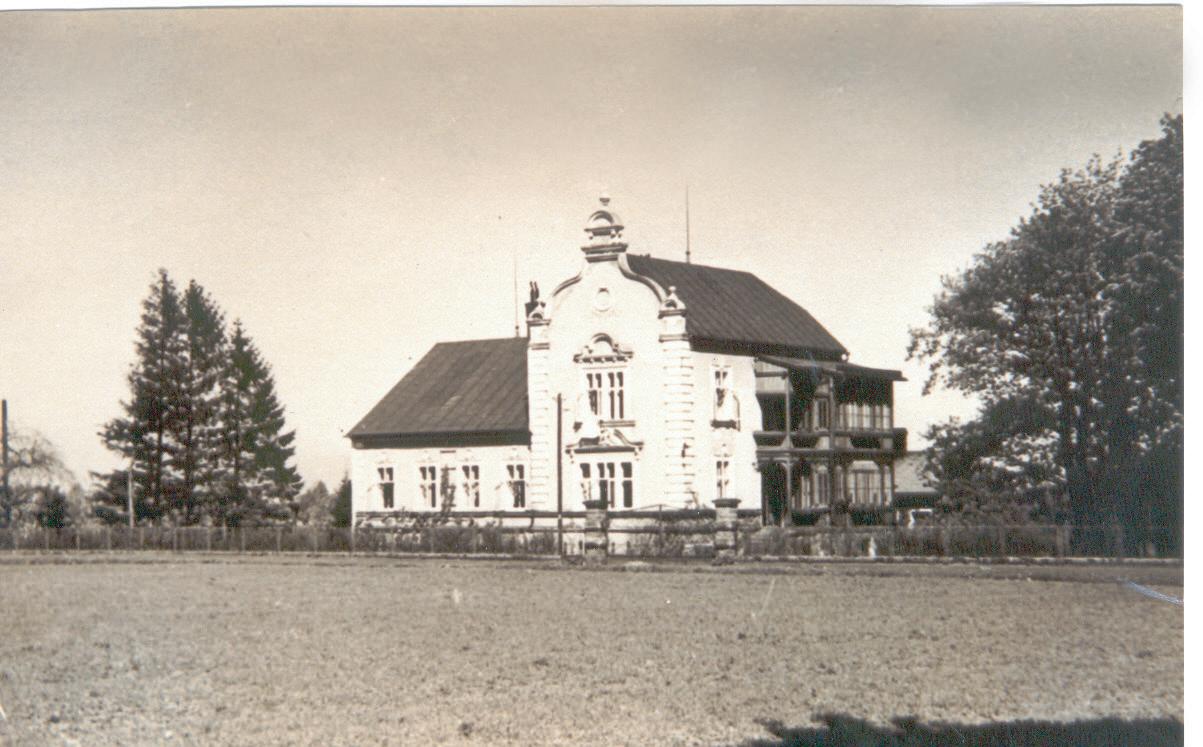
As part of the corporate history of a family business celebrating its 70th anniversary, we begin our journey by recounting the lives of the founders of this remarkable
The brothers Otto, Fritz, and Richard Vogt grew up in Europe in an environment marked by profound historical changes and a rich industrial tradition, as they came from a family dedicated to the textile industry, a legacy that would have a
The Vogt Lindner family consisted of their father, Otto Vogt (senior), a disciplined and visionary entrepreneur born in 1887 in Lobnitz, then part of the Austro-Hungarian Empire, and their mother, Marianne Lindner, born in 1891 in Budapest, a dedicated woman and a cornerstone in the


| Erich Vogt


In 1915, Otto Vogt (senior), together with his cousin Erich Vogt, became the second generation of co-owners and managers of the family businesses: a textile industry and an abrasives industry. The thriving textile factory, specializing in the production of high-quality dyed wool yarns, had been founded in 1886 and was managed by its owners, cousins Leopold and Adolf Vogt, marking the beginning of a successful journey.

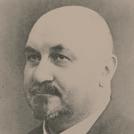
This industry, located in Lobnitz, in the Bielitz region, along with other textile factories, was an economic driver for the Upper Silesia region (now Poland), employing numerous workers, including technicians, skilled laborers, and administrative staff. The factory's products were renowned for their durability and resistance, attributes achieved through meticulous dyeing processes that ensured the colors remained vibrant over time. In addition, they exported their products to countries as far afield as Persia, where the threads were used to make high-quality handmade carpets.
The four children of the Vogt Lindner marriage spent their childhood and youth in the family home in Lobnitz. Otto, the eldest brother, was born in 1914, studied chemical engineering in Zurich, and continued the family legacy in the textile industry. He was an intellectual, sociable, and enterprising man with a great facility for languages. Fritz, two years younger, was a doctor of chemistry, a scholar, and passionate about reading and gardening. Käthe, the only daughter, studied nursing.
The youngest brother, Richard, was born in 1922, and much of this chapter will be based on the experiences he recounts in his diary, as they provide insight into how he shaped himself and how he managed to use his experience to imbue the company with a special spirit that left its mark on several generations of employees who worked with him. He was passionate about machines, technology, and innovation, and without him, this company would not have existed in the form we know it today.
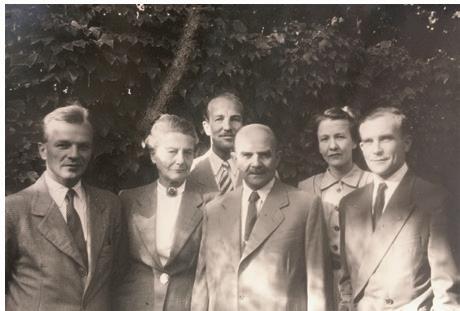
With the outbreak of World War II in 1939, Richard's life changed dramatically. At the age of 17, he witnessed the outbreak of the conflict in Danzig on September 1, 1939, while sharing a room with his brother Fritz in that city.
Although he managed to complete his secondary education, the war disrupted his life plans. He did internships at metalworking companies that awakened his vocation for engineering, and although he did not have the opportunity to pursue his dream of studying that career, his passion for mechanics would later lead him to found the VOGT company together with his brothers.
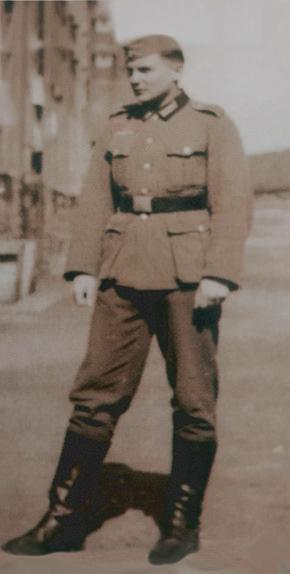
In March 1940, Richard was called up for compulsory labor service, receiving military training that, far from dampening his entrepreneurial spirit, strengthened him to face future challenges.
Finally, in 1941, Richard was recruited for training in an anti-tank artillery unit where he was trained as a soldier in anti-tank tactics and physical endurance. Shortly thereafter, he was sent to the Eastern Front, participating in the invasion of the Soviet Union. He faced fierce battles and extreme conditions, including temperatures as low as -40°C, lack of supplies, and a relentless enemy. He was assigned to an armored tank destroyer unit, facing infantry and the dreaded Soviet T-34 tanks head-on.
In 1943, Richard was promoted to commander of an armored vehicle, participating in defensive operations as the German army retreated in the face of the Soviet offensive. He was wounded, and with the collapse of the German army in 1945, he was trapped in hostile territory. He was eventually captured by Czech partisans and handed over to the Soviets, thus beginning his life as a prisoner of war, an experience that would last four years and redefine his existence.
During his captivity in Russia, Richard faced inhumane conditions: forced labor, hunger, and disease. He worked on building roads and bridges, learned Russian, which allowed him to obtain less strenuous tasks, and it was in those moments of despair that he understood the true valueoflifeandthestrengthofthehumanspirit.
Meanwhile, his family's life continued with its own challenges. Otto, suffering from hepatitis, was removed from the front after serving as a translator, taking advantage of his command of several languages. Fritz, after serving on the Russian front, managed to continue his studies at the University of Innsbruck. Käthe, dedicated to humanitarian work with the Red Cross, also facedtheharshconsequencesofwar.
The textile factory that once symbolized the family's success and prosperity was abandoned by the parents in early 1945, shortly before the Russians arrived and looted and occupied the premises, which were later confiscated by the Poles, ending an era that had marked the identity oftheVogtfamilyforgenerations.
In 1949, after being liberated, Richard returned to a devastated Germany. Facing this new reality wasa greaterchallengethananybattle.
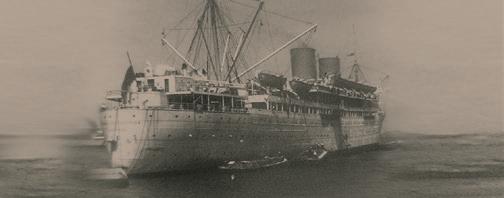
However, these experiences forged great strength in him and transformed his experiences into lessons in overcoming adversity, which he integrated into his future personal and professional life.
At the age of 28, after working in a car repair shop in Bavaria, Richard set off for Chile, where his brother Otto had previously emigrated, followed by his other brothers and parents. He boarded a ship in Liverpool and arrived in Valparaíso a month later, in April 1951. This journey was a period of reflection and adaptation for Richard, who arrived in Chile determined to build a new life.
His brother Otto, following the family tradition, had founded an industrial dyeing company in Santiago, Chile, which used high-quality aniline dyes to dye wool for the manufacture of carpets and clothing. Later, his brother Fritz arrived in Chile and joined his brother in the business. The industry, located on Santa Rosa Street, prospered greatly thanks to the collaborative work of the two brothers, coupled with the advice of their father Otto (senior). Although Richard received an invitation to join the business, he decided to focus his career on the automotive sector. He initially worked at Salinas y Fabres, where he repaired transmission systems and internal combustion engines. He then joined a garage specializing in Mercedes Benz vehicles, where he honed his skills in injection
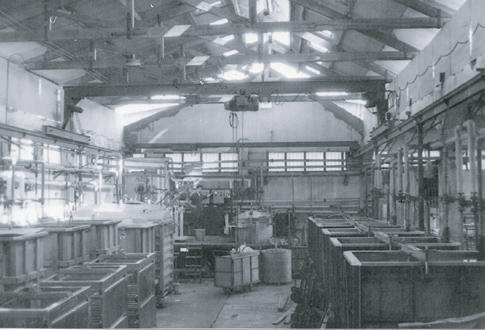
systems and complex mechanical fault diagnosis and learned the language.
In 1952, his life took a new turn when he joined a company that imported machinery and water pumps, where he worked on maintaining this equipment and acquired extensive knowledge about it. There he met a Yugoslavian welder who was an expert in oil pipelines, with whom he developed his first business venture as a partner, dedicated to the manufacture and repair of spare parts for heavy machinery, setting up shop in a small workshop near Estación Central.
This first business challenge marked a turning point in Richard's life, as it not only represented the beginning of his business career in Chile, but also the birth of a philosophy based on constant improvement and the search for innovative solutions. The technical skills he had honed throughout his life, combined with his tireless entrepreneurial spirit, laid the foundations for what would later become a highly specialized and renowned company in Chile, one that continues to inspire to this day.
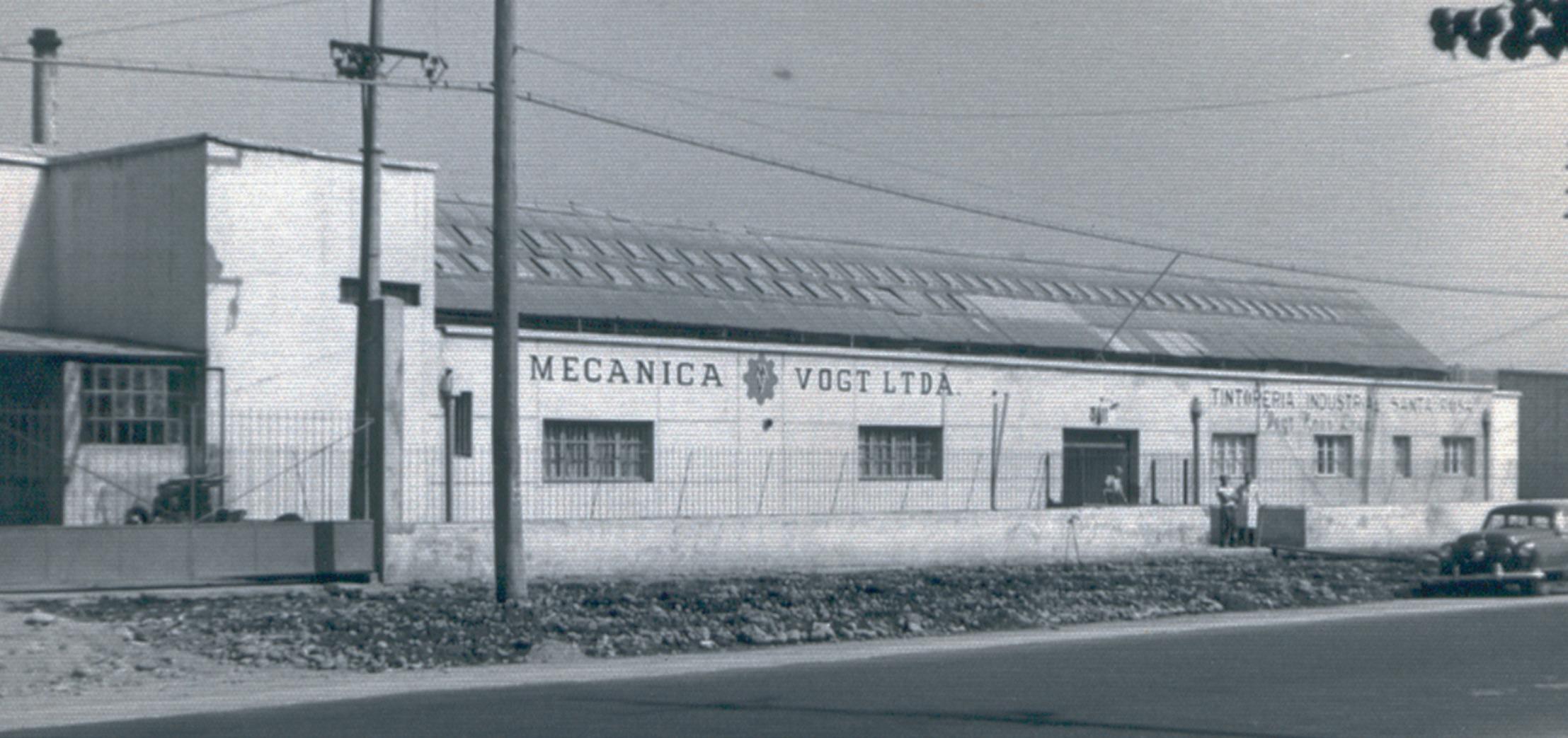



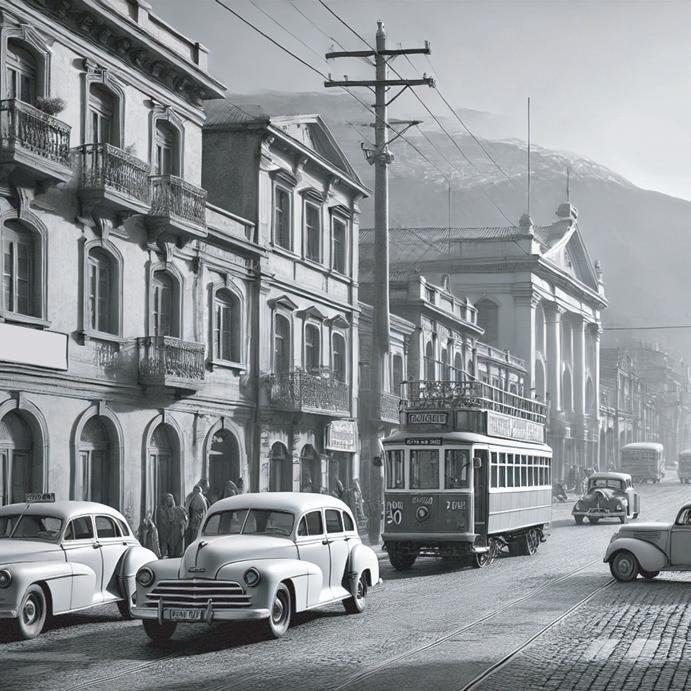
Following the economic crisis of the 1940s, Chile began to experience a slow recovery under a development model based on industrialization and import substitution. In the political arena, the presidency of Carlos Ibáñez del Campo (1952-1958) sought to stabilize the economy through austerity and modernization policies, although it faced social tensions stemming from rising living costs and the unequal distribution of wealth. In this context, the creation of small and medium-sized enterprises was not only an act of entrepreneurship, but also a significant contribution to the development of a country that aspired to diversify its economy and strengthen its national industry.
|
Chile begins a slow economic recovery, betting on industrialization and the creation of national companies.
With a small technical team and basic tools, a company began to take shape that would contribute to the country's industrial development. 1954
The 400 m² workshop begins operating on the premises of VOGT Brothers Dye Works
In 1954, brothers Otto and Fritz Vogt suggested that Richard move from his modest workshop in the Central Station neighborhood to the premises of Tintorería Industrial VOGT Hnos. and develop a metalworking workshop suitable for repairing and manufacturing machines. It was the opportunity Richard had been waiting for, as he was interested in this field and knew it well.
So it was that in May of that year, with limited resources but a clear vision, the Vogt brothers decided to refurbish a 400 m² warehouse that had originally been used to store aniline dyes at the Tintorería Industrial dry cleaners and began operations as a metalworking shop, with two lathes, a drill, a welding machine, and a set of basic tools. The team was small but committed, with Richard leading the venture, a workshop manager, a technicaldraftsman,twolatheoperators,threemechanics,andawelder.
'54 YEAR


The workshop began operating by manufacturing universal axles, spare parts for water pumps, and other machines used in agriculture, standing out from the start for the quality, punctuality, and innovation of its products. It then began manufacturing grinders, scale lifters, concrete vibrators, and concrete mixers, establishing a reputation in the construction sector.
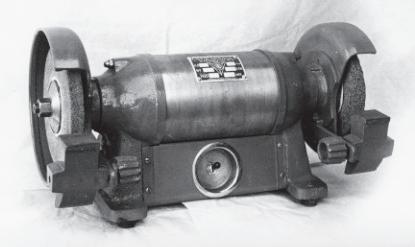
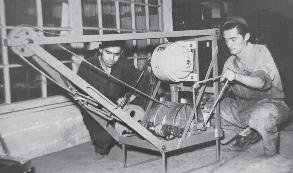
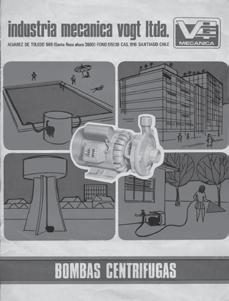

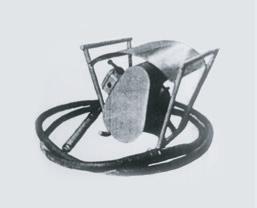
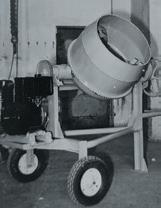

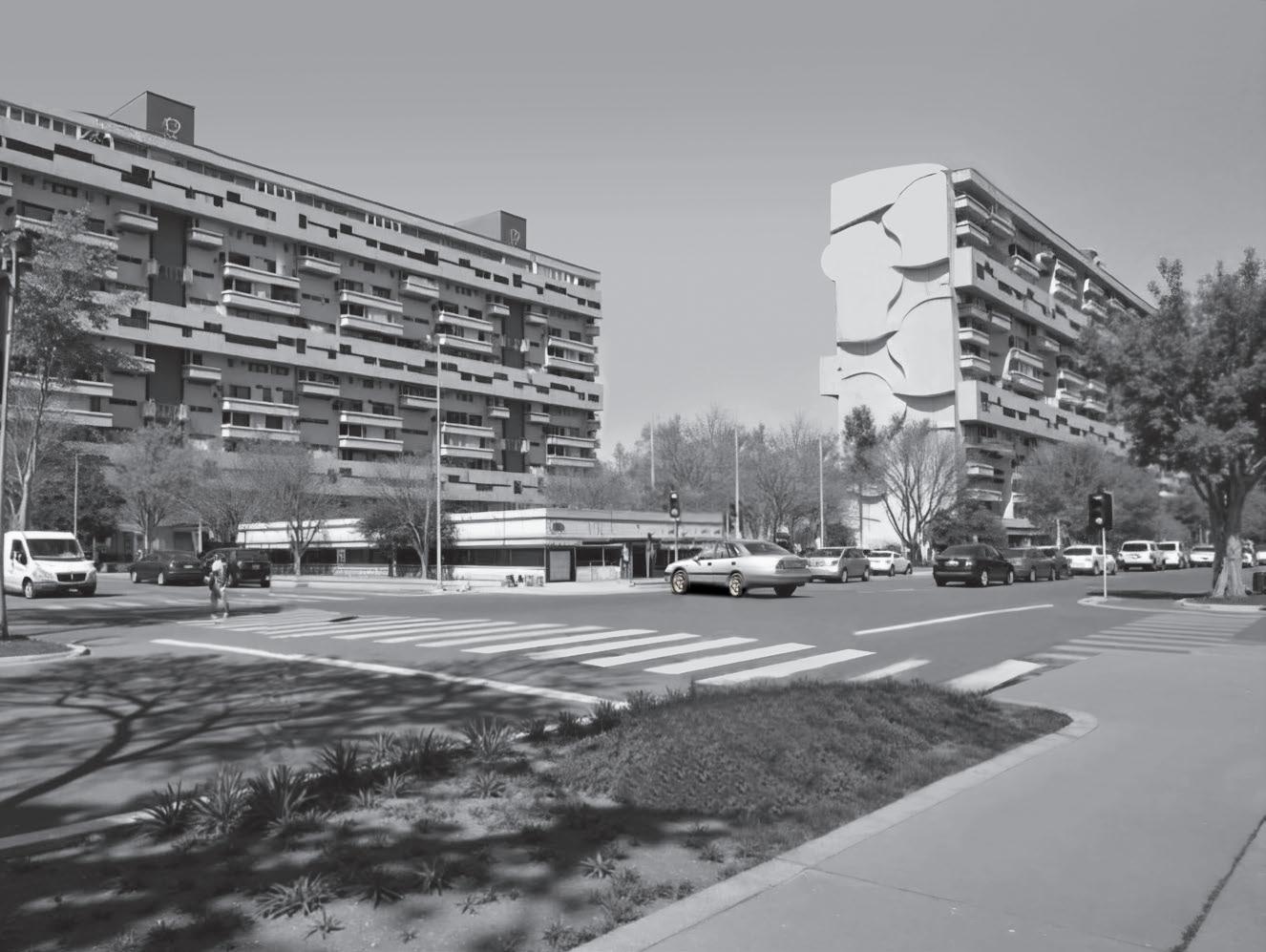


In the 1950s, buildings used pumps to supply tanks located at high elevations, which allowed water to be distributed to apartments by gravity.

The first VOGT water pumps are manufactured.
The first water pumps were manufactured in 1958. They were equipped with a coupling body with two seals, a shaft mounted on two bearings and a grease chamber for lubrication, as well as a semi-open three-blade impeller. Although their design was basic, these pumps proved to be functional and successful on the market, and were sold for several years.
In 1957, a new type of foot valve was designed and began to be manufactured, with a range from 1“ to 6”, made entirely of bronze, including a protective screen. These valves became an essential component for pump suction, ensuring optimal performance, and formed an important part of the workshop's spare parts and accessories production program.
The first version of self-priming pumps for the agricultural sector is created, Model AC.
Rough flow and head tests are carried out, reflecting the early focus on equipment quality and performance.
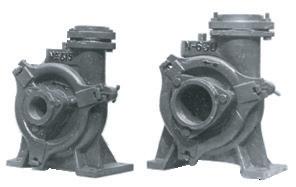

At the same time, the first pump with a closed impeller was developed. The model 625 pump, with a 2 1/2“ suction and 2” discharge, was very well received in the market due to its excellent combination of pressure and flow, characteristics that are highly demanded in various applications. Its sealing system used a gland packing, and its coupling, designed for bushings or pulleys, allowed for a robust installation when mounted with a bearing housing.
Then came the challenge of creating a first version of self-priming pumps that could serve the agricultural sector, which in those years did not have adequate irrigation systems. This led to the creation of a selfpriming pump in three sizes: the AC-720 (2“ x 2”), AC-750 (3“ x 3”), and AC-900 (4“ x 4”). All had an open impeller and a monoblock coupling directly to the motor. They also incorporated a stainless steel mirror disc, which could be replaced in case of wear.
Flow and height tests were carried out on a rudimentary test bench inside the workshop to evaluate the effectiveness of the equipment. In addition, on some occasions, the tests were carried out in the Mapocho River in Santiago. This shows that, from the early years, special attention was paid to the quality and performance of the equipment. The procedure consisted of transporting the pumps, together with a gasoline engine, “chorizo” type suction hoses, and a suction basket in a truck to the Pedro de Valdivia bridge on the Costanera in the Providencia district, where the equipment was installed on the riverbank, submerging the basket in the water and evaluating the suction capacity from a height of approximately 6 meters. The first tests were not without failures: cavitation problems, pressure losses, and adjustments to the impellers were constant challenges. However, each attempt allowed for the identification of improvements in the design until optimal performance was achieved.
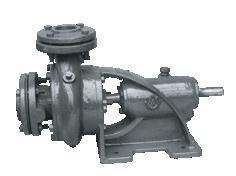
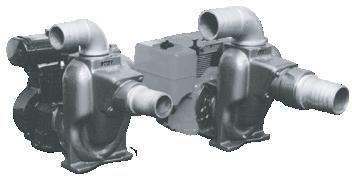

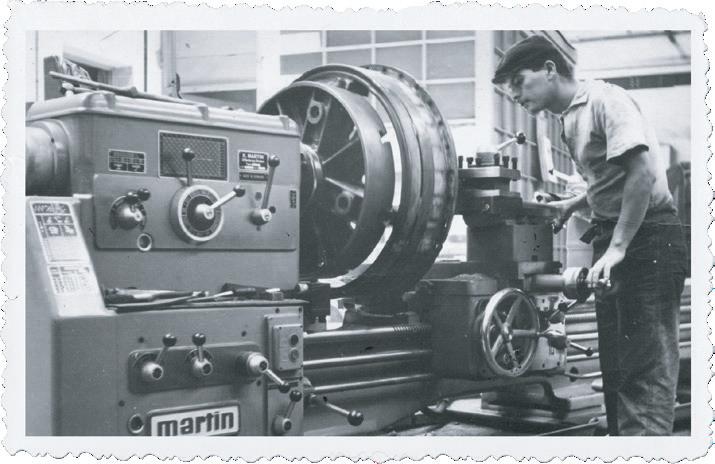
The first hydropneumatic equipment was manufactured, with pressure tanks and air receivers, and a new and improved version of the three models of 2“, 3” and 4" self-priming pumps for agricultural irrigation was developed. With improvements and innovations, these pump models are still being manufactured today, 60 years after their creation.
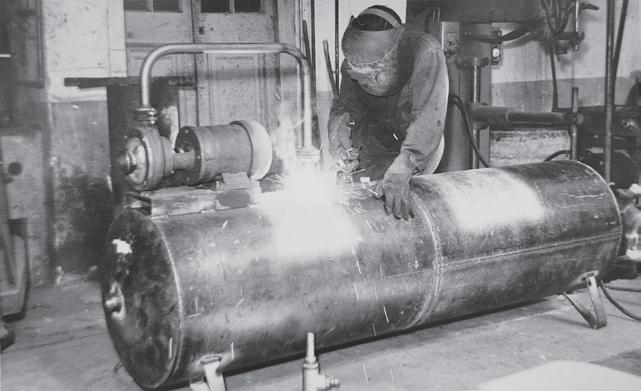
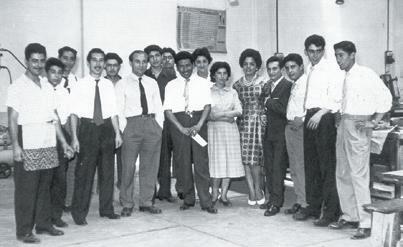
During the 1960s, the workshop experienced significant growth, prompting the partners to invest in new machinery, importing the first lathes from Germany and France, which proved fundamental to the future of the company.
The first new machines are purchased in Germany and France.
The first hydropneumatic equipment is manufactured, with pressure tanks and air recovery systems.
The first pumps are developed to supply water to low-rise buildings.
During this period, an interesting innovation was developed consisting of removable shafts with clamps for monoblock pumps, which allowed for a more compact and economical pump that was used for several decades. In addition, the line of construction machinery was expanded with concrete vibrators, compactors, scale hoists for lifting weights of up to 500 kilos, and small concrete mixers.
Two models of centrifugal pumps were also created, the 605 pump (1“ x 3/4”) and the 610 pump (1 1/4“ x 1”), which were used to provide pressure in multi-story construction. This range of pumps was later expanded to include a series of pumps for taller buildings.

In 1964, Richard made his first trip to Germany since arriving in Chile. From then on, he would travel every two years for the next four decades, visiting trade fairs and suppliers. These trips would prove fundamental in equipping the company with new technologies, designs, materials, and precision instruments, which would ultimately set VOGT pumps apart in terms of innovation, efficiency, quality, and durability.
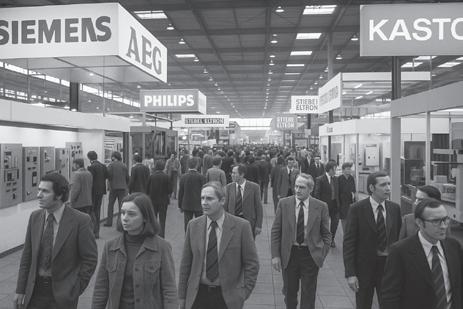




license is obtained from Allweiler to manufacture
The government of Salvador Allende promotes the nationalization of strategic companies and price controls, transforming the economic environment.
In 1968, Richard visited the Allweiler company in Germany and obtained a license to manufacture its line of high-pressure multistage pumps in Chile. This represented a qualitative leap in the type and technology of the pumps that would be manufactured in the future and in the specialization of the personnel.

Following the election of Salvador Allende in 1970, the new government began to implement major changes, with an economic model based on the concentration of business ownership in the state and the consequent nationalization of industries and an intense agrarian reform. Price fixing, shortages, a black market, and other negative effects on the economy led to significant political polarization among the population, resistance from business sectors, and uncertainty about the future.
Family support among the three brothers was essential during this period to overcome this difficult time, as they were very concerned about being subjected to a totalitarian regime and having to leave the country with their families. Among the measures they took was to separate the industrial dry cleaning business from the mechanical workshop
With the development of the AC-1500 and AC-2000 models, the VOGT line of selfpriming pumps is now complete.
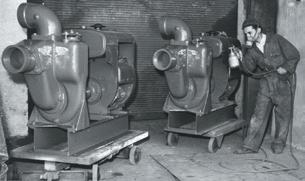
Despite the political context and in parallel with the heavy workload of the time, new models of self-priming pumps were developed: the AC-1500 6“x6” and the AC-2000 8“x8”. With the creation of these models, a complete range of self-priming pumps was achieved, covering a range from 2“ to 8”.
These AC-1500 and AC-2000 pumps are still in use today in important applications such as lithium carbonate extraction in non-metallic mining.
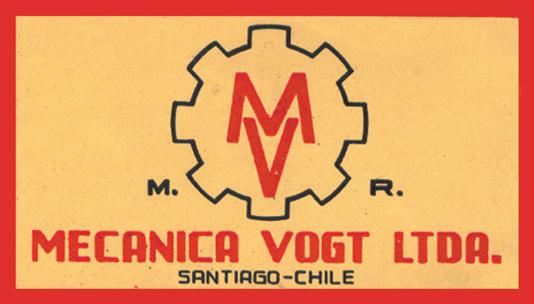
In November 1971, the company “Industria Mecánica VOGT Ltda.” was founded, formally establishing what would later become a benchmark in the pumping solutions industry.
During that period, several contracts were obtained with state agencies such as INDAP, which required significant monthly deliveries of motor pumps. The difficulty lay in obtaining the supplies and dollar quotas needed to import the gasoline engines required for the motor pumps.
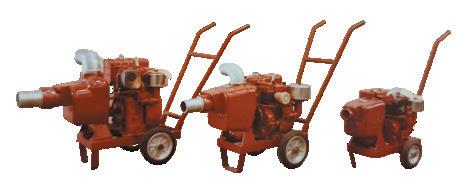
As the internal situation in the country worsened and uncertainty grew, many businesspeople began to look for alternatives outside Chile. Richard had visited countries in the Andean region with delegations from Asimet, and the partners thought it would be a good idea to explore Ecuador, as it offered relative stability compared to Chile, making it a good option for diversifying the business and avoiding exclusive dependence on the Chilean market.
In 1972, it was decided to found Indumec (Industria Mecánica Ecuatoriana) with the aim of expanding coverage to new markets. The plan was to manufacture the products in Chile and ship them in parts to Guayaquil, where they would be assembled and sold. To this end, an office and a small warehouse were rented, where a mechanic sent from Chile was responsible for assembling and repairing self-priming pumps and concrete vibrators.
Despite Richard's efforts and the long periods of time he spent in Guayaquil, the partnership did not prosper as planned and operated until 1978, when it was finally decided to end this stage and return to Chile, which was undergoing major economic changes at the time.
The population of Chile exceeds 10 million inhabitants.
free market model is established in Chile.
The mechanical spring seal is inserted, replacing the gasket seal, allowing for leak-free sealing.
At the same time, in 1972, development began on a new type of compact, economical pump that eliminated suction and discharge flanges and incorporated a closed impeller, allowing for higher pressure than previous models. This new design, with threaded suction and discharge ports and a monoblock construction for direct coupling to the motor without a bearing housing, would become the best-selling line in building pressure systems in the following decades, with tens of thousands of units manufactured.
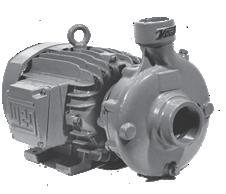
Another innovation at the time was the introduction of a new sealing system for water pumps. Mechanical spring seals imported from Germany were a novelty in Chile, as at that time only gasket seals were used in pumps. The new solution provided leak-free sealing without adjustment and required experimentation with materials until the most suitable combination for the Chileanmarketwasfound.
The year 1973 marked a major turning point, as the military government that followed the Popular Unity introduced major changes in the country and a new economic model, which initially involved radical changes in regulations and the country's economy. For entrepreneurs, this period was marked by profound readjustment. Although many companies were returned to their owners or privatized, the vast majority faced great difficulties due to the drastic elimination of tariff barriers that had fostered and protected domestic industryfor40years.
Towards the end of the 1970s, the focus was on opening up the economy to foreign trade and promoting exports to generate foreign exchange, which led to the development of new export sectors in agribusiness, forestry, fishing, andmining..
Among the countless affected companies was the VOGT Brothers Dye Works, which was eventually forced to close, and brothers Otto and Fritz joined their brother Richard full-time in the metalworking business.
In this delicate context, and with a view to adapting and preparing for the future, the Vogt brothers decided to legally establish the company Industria Mecánica VOGT S.A. in February 1979. The move to become a joint-stock company would prove crucial for the company's future development, facilitating succession and governance over the next forty years.
Upon reaching its 25th anniversary, the company faced significant internal and external challenges. The need to adapt to an increasingly competitive environment drove reinvention in various areas. Competing with foreign products required continuously improving the value proposition, optimizing processes, and strengthening the corporate identity. This period marked a turning point that allowed the company to move forward into the next two decades with a more solid and strategic vision.
In order to increase sales, the company expanded its own sales channel by opening stores in Concepción and Valparaíso, as well as a showroom in downtown Santiago.
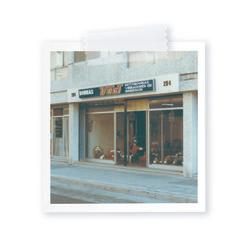
At the same time, the range of models was expanded with a new line of centrifugal pumps compliant with the DIN 24255 standard, with models 630, 640, and 650, which significantly increased the size and performance of VOGT pumps. As part of this expansion, a first test pit was built in the workshop to carry out tests and measurements of the flow rates and pressure of the manufactured pumps.
Annual


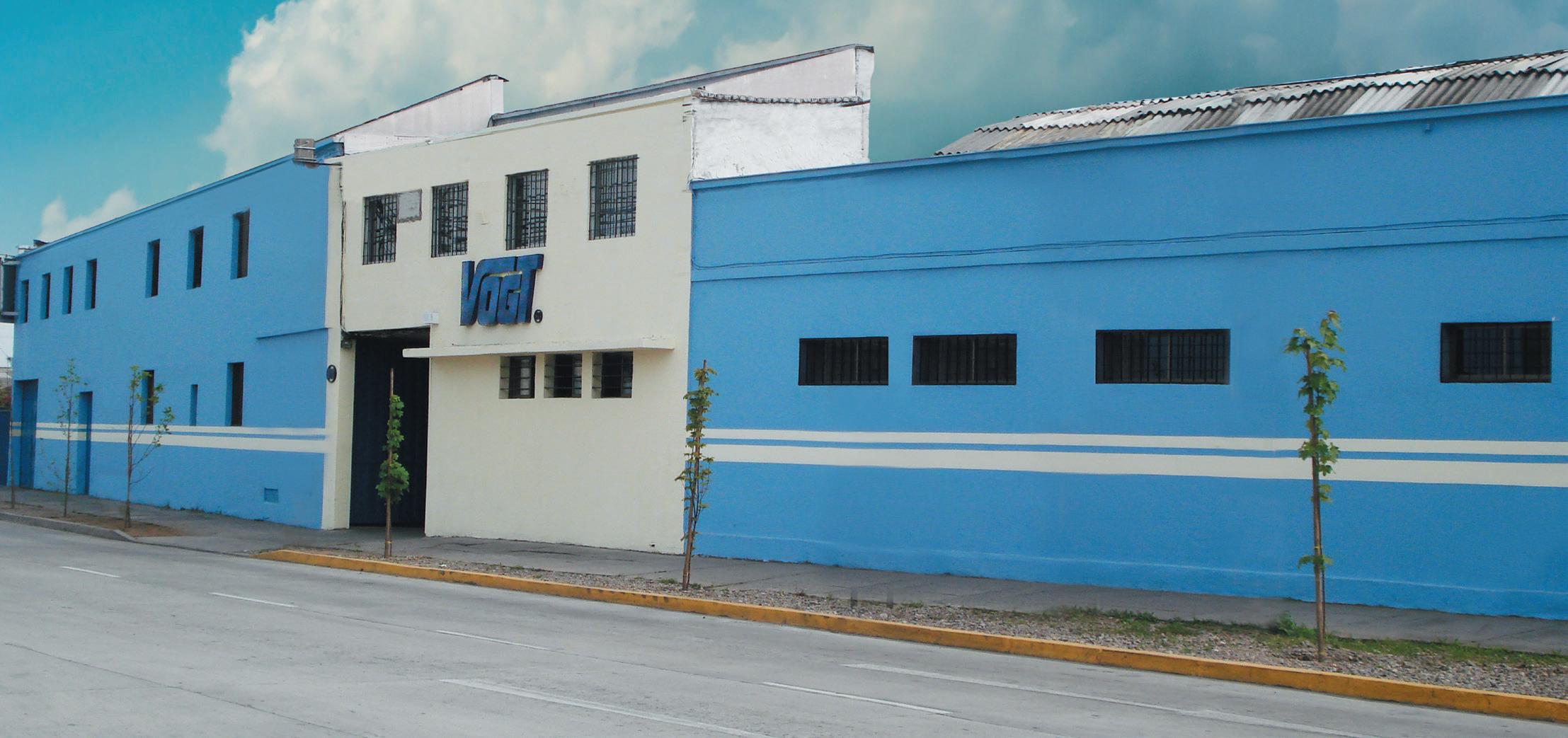



The financial crisis spread and became widespread, affecting most sectors, which led to a sharp decline in economic activity and increased unemployment. Survival was seriously at risk, and great efforts were necessary to remain in operation.

The Mining Law is enacted with the aim of promoting private investment.
The operation underwent drastic adjustments, such as reducing staff and cutting weekly working hours, extreme but necessary measures to hold out until the outlook began to stabilize.
In addition, the company ventured into activities outside its area of expertise, such as contracting work for the Santiago Metro and other maquila work for third parties. Although not ideal, this helped weather the storm of those years and generate additional income.
The biggest economic and financial crisis in 50 years.
The Irrigation Law (18,450) is enacted.
1985
Activities are carried out as contractors for the Santiago Subway and as a subcontractor for third parties.
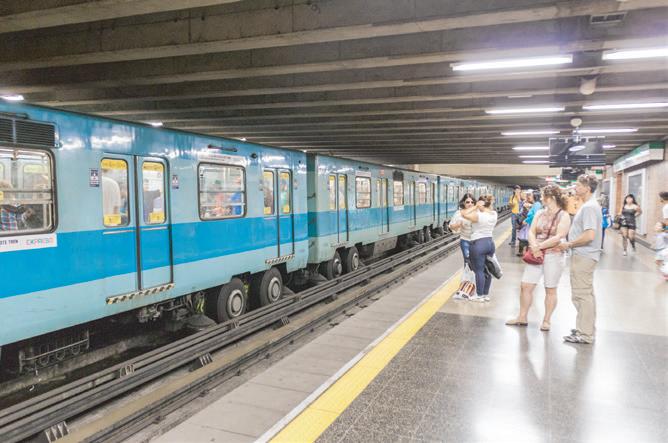
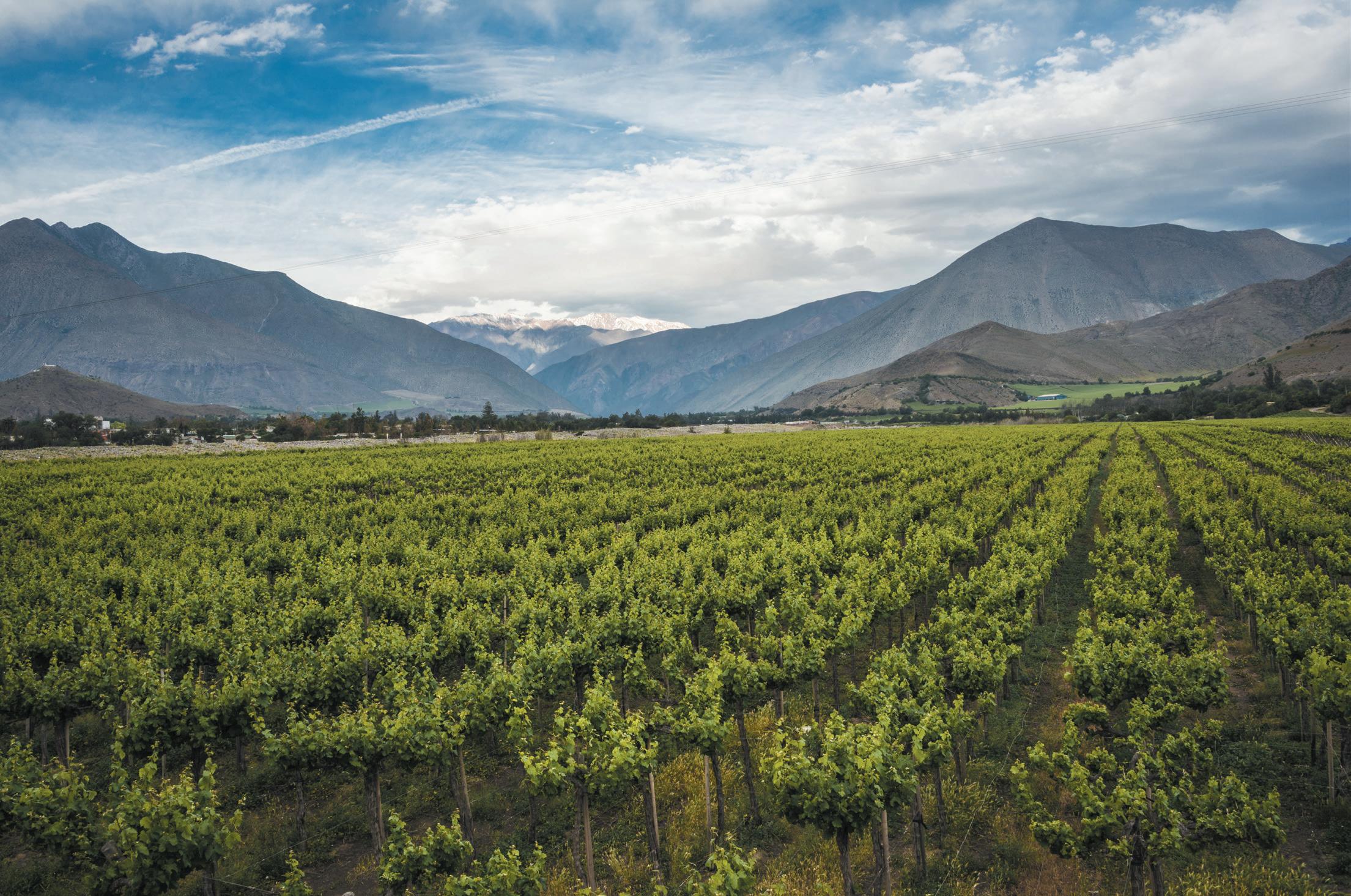

The enactment of the Irrigation Law (18.450) in 1985 marked a turning point for private investment in irrigation and drainage infrastructure, opening up a huge business opportunity. This legislation, which promoted the expansion of technical irrigation, became a key pillar over the following two decades.
With the growth of a specialized industry of installers and suppliers, irrigation technology advanced rapidly, and this was met with innovations in pumps and an expansion of the product range.
As a result, the area of crops with technical irrigation grew from 20,000 to 400,000 hectares by 2020, with VOGT pumps establishing themselves from the outset as a key benchmark in the sector.
The
The focus is shifting toward technical irrigation and industrial processes, where competitive advantages remain.
The need to expand the dissemination of technical expertise was recognized, and a first technical catalog of VOGT pumps was published, incorporating detailed hydraulic curves and individual technical specifications for each model. This initiative not only enabled customers to make more informed decisions, but also strengthened the company's position among design engineers, who found this catalog to be a valuable tool from a reliable and specialized supplier.

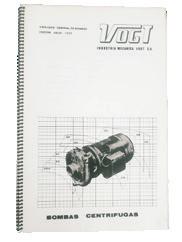



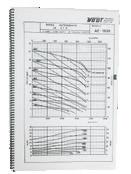

However, during the same period, the growing importation of inexpensive Italian and Spanish pumps caused a significant change in the market. These imported pumps were produced on a large scale in automated plants and drove domestic manufacturers out of the market.
Faced with this new scenario, they began to gradually withdraw from the housing and construction segment, focusing their efforts on markets where they maintained competitive advantages, such as technical irrigation for fruit exports and industrial processes.


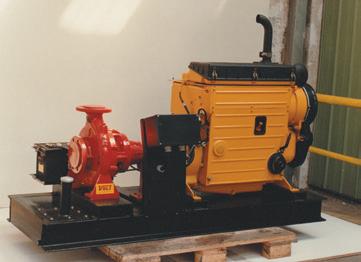


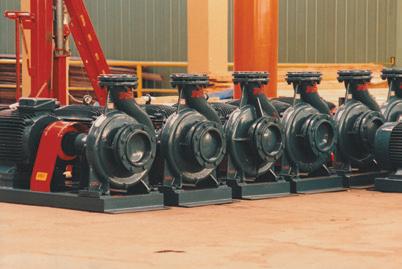
The Álvarez de Toledo warehouses in San Miguel are acquired, expanding the infrastructure to 3,400 m².
In 1986, the warehouses located in Álvarez de Toledo in the municipality of San Miguel in Santiago were acquired, a fundamental milestone that expanded the infrastructure to 3,400 m² and allowed for the development of the manufacturing plant, where it operated until 2021.
In addition, as part of the modernization, a comprehensive reorganization of the production processes was carried out. Workflow was optimized and individual tasks were assigned to each sector of assembly, installation, and painting, significantly improving operational efficiency.
A year later, in 1988, the new hydraulic test bench was inaugurated, an investment that had strategic implications as it not only strengthened technical capabilities but
Remodeling of the manufacturing plant with a new layout, optimizing processes and improving operational efficiency.
also became a central element of the value proposition for decades to come.
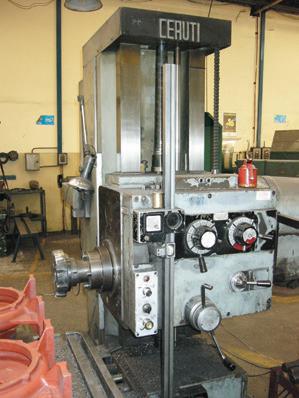
A new hydraulic test bench is inaugurated, strengthening technical capacity.

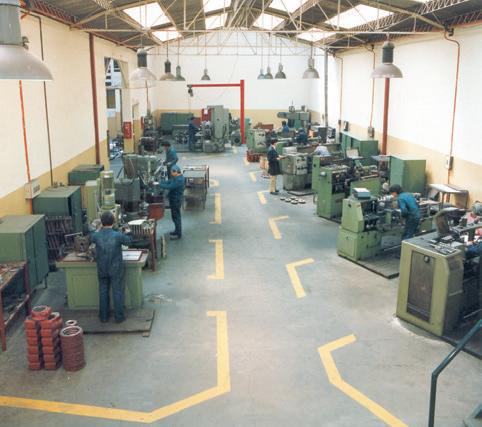

Direct importation of electric motors begins, establishing a strategic alliance with a Brazilian manufacturer.
To rapidly increase sales volume, a major effort was made to import complementary products that would offset the seasonal nature of irrigation pump sales. Along these lines, large quantities of German Buderus wood-burning stoves were sold, and Marelli motor pumps and gasoline chainsaws were added to the product line.

The digitization of processes and the creation of the IT department mark the entry into the technological era.
A branch is opened in Concepción to directly serve industrial customers in the area.
Increasing quantities of imported electric motors were required to be coupled to the manufactured pumps, with the aim of reducing costs and ensuring supply in the face of frequent inventory shortages. As a result, the company began importing electric motors directly according to an annual plan. Initially, motors were imported from Argentina and France, eventually leading to a long-term agreement with a major motor manufacturer in Brazil, which over time became a strategic partnership for both parties.
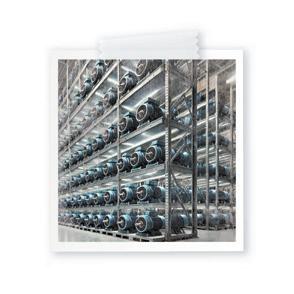
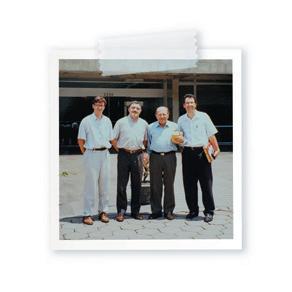
In addition, an exclusive representation agreement was reached with a major European firm, which enabled the company to develop an interesting share of the deep well pump market at that time.
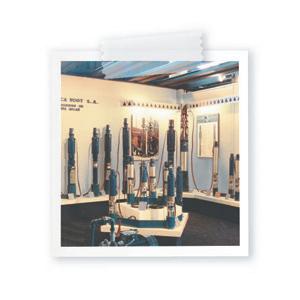
At the end of the 1980s, Chile was undergoing profound social and political change that culminated in 1990 with the return to democracy and the beginning of a new era in the country's history.
During those same years, the world once again experienced momentous changes with the creation of the www protocol, which ushered in the Internet age.
Los nuevos sistemas informáticos bajaron de precio y se pudieron hacer las inversiones orientadas a la digitalización de los procesos, adquiriendo los primeros computadores y creando el área de informática. También surgieron nuevos desafíos, como la transición de los sistemas de registro manuales a
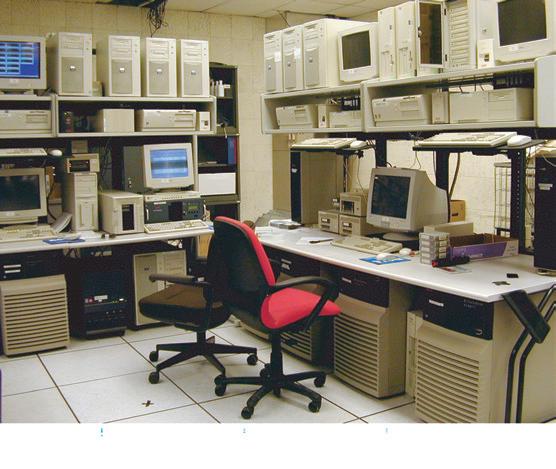
In addition, the arrival of Windows 3.0 on the market led to the mass adoption of personal computing, transforming the way companies operated. This new communications technology not only streamlined connections with customers and suppliers, but also expanded opportunities for collaboration with companies in different parts of the world.
At that time, the company had 90 employees and sales distribution reflected the diversity of the markets it served: 40% was for agricultural irrigation, 28% for industry, 20% for construction, and 8% for mining. In addition, nearly 80% of sales were made through distribution channels, and it was necessary to develop a proprietary channel to be closer to customers and better
branch was opened in 1992, staffed by professionals with the firm intention of participating directly in serving industrial customers in the area.
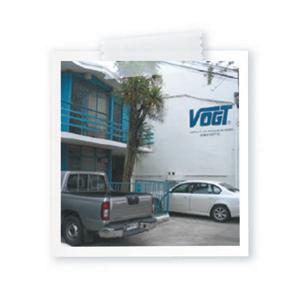

At that time, the partners were already over 70 years old and faced the great challenge of ensuring generational succession in management and leadership. After four decades at the helm, Richard Vogt Lindner formally handed over responsibility to his son, Ricardo Vogt Baeza, who until then had served as deputy general manager and took over as general manager with a mandate to professionalize and modernize the company. '94
Succession in management and leadership, Ricardo Vogt B. takes over.
The first office is established in Antofagasta to participate in large-scale copper mining.
The population of Chile exceeds 14 million inhabitants. 1996
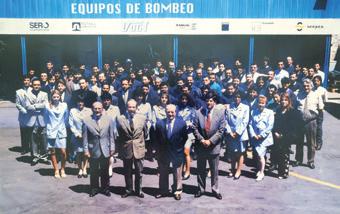
Thus, beginning in 1994, the new administration promoted the formation of a management team composed of external professionals and focused on developing a five-year strategic plan designed to segment markets of interest and align decisions with a clear vision for the future.
In addition, there was a need to invest significantly in modernizing manufacturing processes and the manufacturing plant to adapt it to this new, more demanding market segment. As part of this transformation, modern technology was incorporated, including the installation of the first numerical control machines, which allowed for greater precision, efficiency, and standardization in the manufacture of components.
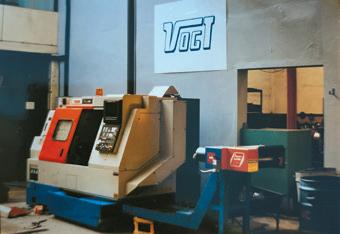
Pumps for processes are developed in the P Series.
A technical sales department is structured by segment to serve customers directly.
The pumping system for Telefónica's corporate building in Santiago has been awarded.
As a result of the new strategic approach, the first heavy-duty industrial process pumps began to be developed for use in industry and mining, which differed significantly from the water pumps that had been manufactured up to that point. Participation in the process pump market posed a major challenge for the technical and commercial team. In fact, a specialized technical sales area was structured by segment, organized to serve customers directly.
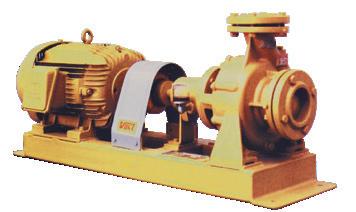
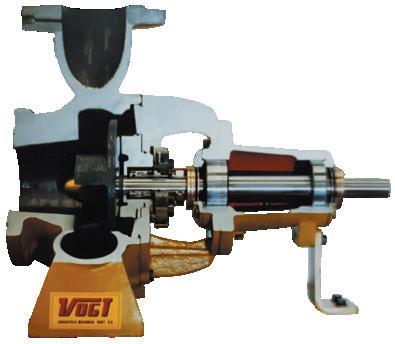
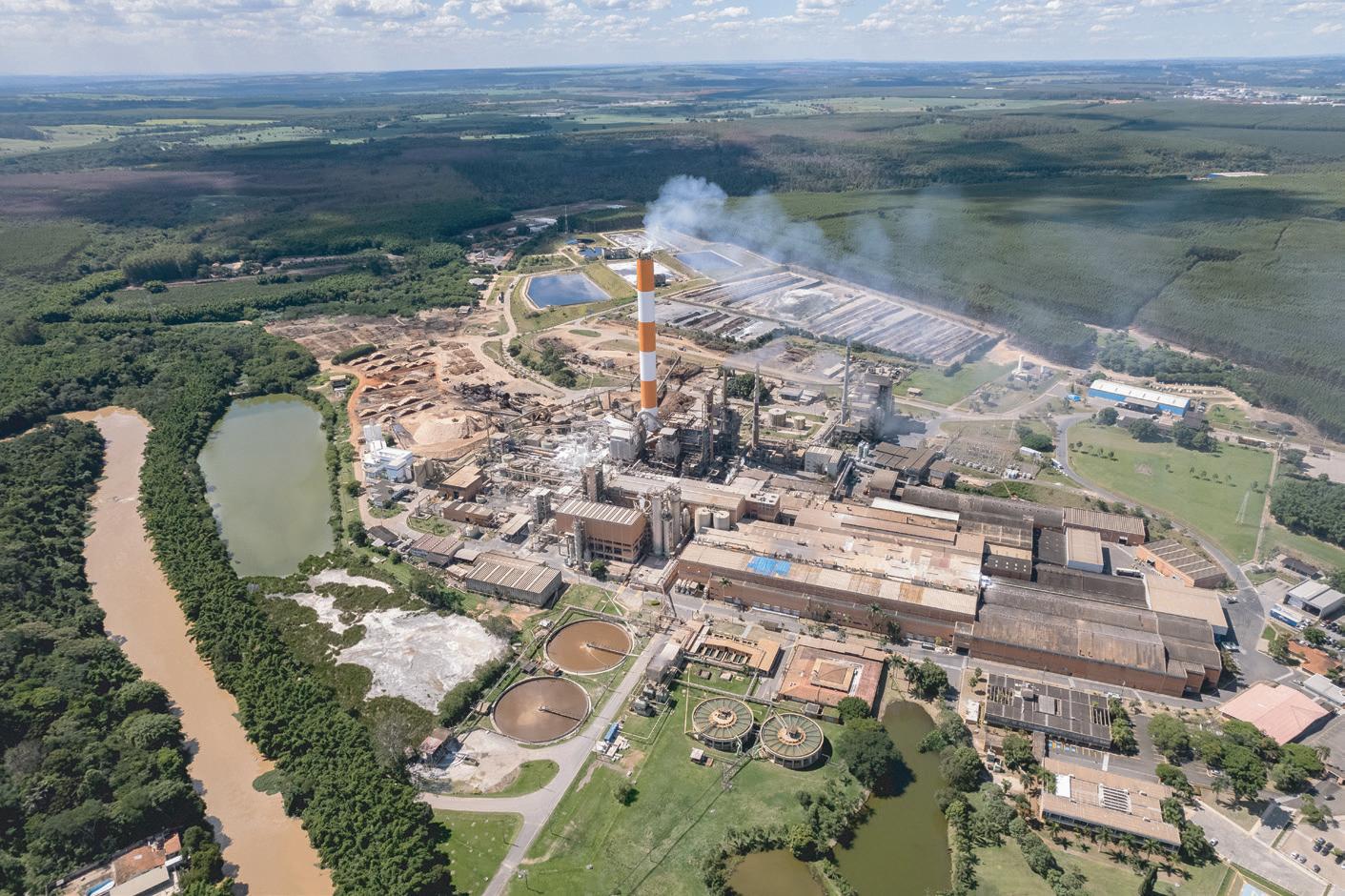

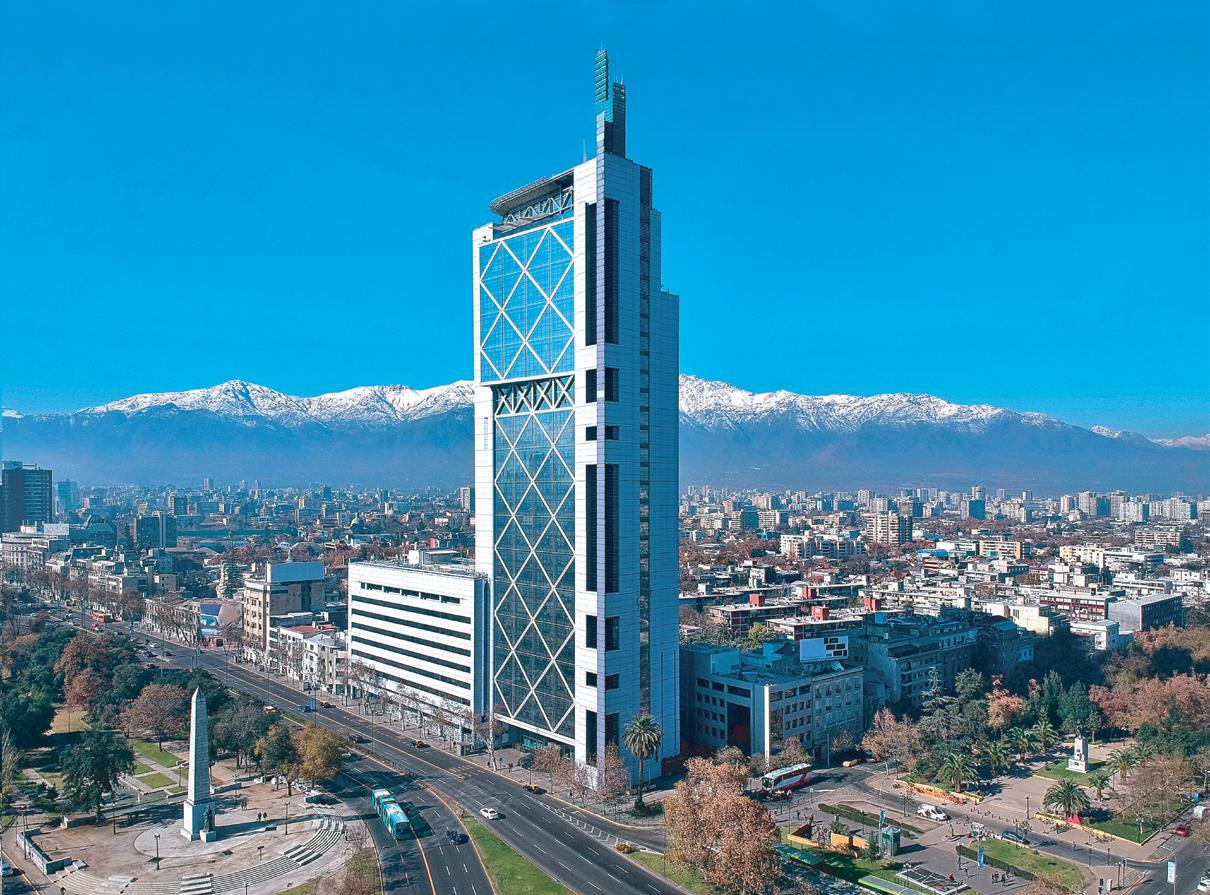
In 1996, the company was awarded the contract to supply and install the pumping system for Telefónica's corporate building, a key project that consolidated its presence in the urban infrastructure and high-end building sector.

During the Asian crisis, they focused on operational efficiency and higher-volume industrial projects.
Neighboring properties are acquired, expanding the plant to 5,000 m².
They are positioned as the only local pump manufacturer in Chile.
The Asian crisis of 1997 caused financial markets to collapse, leading to a reduction in investment in many industries. However, we managed to weather these difficult times by working internally to improve operational efficiency and focusing on the industrial market, which involved larger-volume projects.
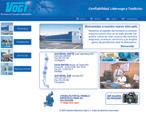
Around that time, neighboring properties were acquired, expanding the plant in the municipality of San Miguel to 5,000 m². This expansion allowed for continuous adjustments to the layout according to operational needs.
By 2000, more than 80,000 pumps had been manufactured and the first website, www.vogt.cl, was launched. This milestone strengthened the company's market presence, enhanced its marketing strategies, and improved communication with customers.
80.000
MANUFACTURED PUMPS
During those years, internal operations had expanded to sustain growth in specialized market segments and ensure quality service to customers. As a result, the team grew to approximately 200 employees.
With the turn of the millennium, they prepared for a new phase of transformation. Globalization intensified competition in the markets, making it increasingly difficult for the local industry to grow.
To meet this challenge, it was essential to develop a point of differentiation that would allow the company to adapt to the new stage, with a renewed vision and a more solid competitive strategy. Of the five water pump factories operating in Chile in the 1970s, by 2000 only VOGT maintained local manufacturing, although it was progressively integrating more products manufactured abroad.
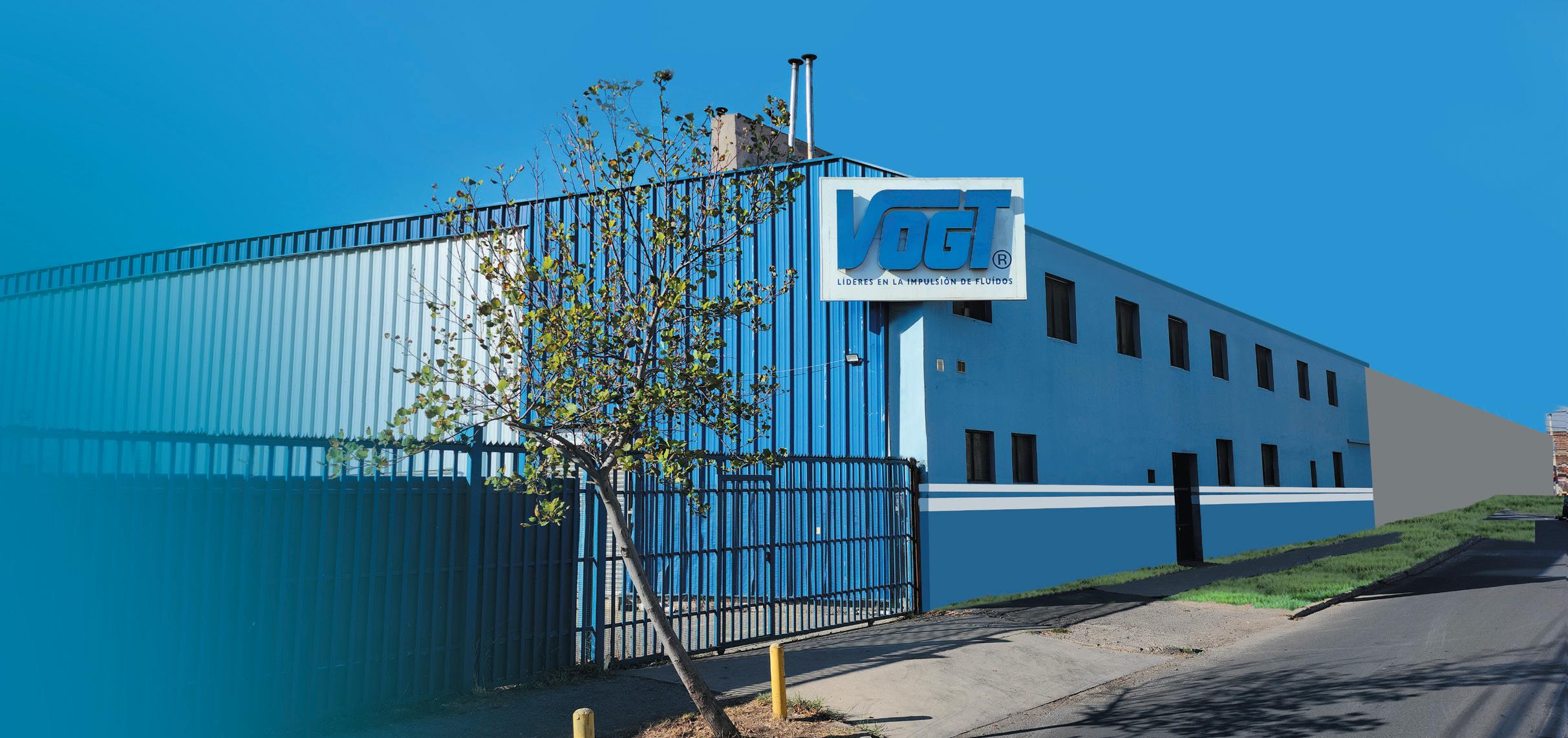





The year 2001 was marked by the September 11 attacks in the United States, which impacted global financial markets and various industries, including mining. In Chile, the fall in copper prices, coupled with the economic crisis in Argentina, added further pressure to the regional economy, leading to a slowdown.
At the same time, the mining industry began to face increasing restrictions on water supplies for its processes. This represented an opportunity to actively participate and contribute to the search for solutions that would promote more efficient water management in mining.
At that time, a floating raft pump was designed and manufactured for the first time. It was a vertical pump with a 25 HP motor mounted on a plastic floating raft, which was installed in a reservoir in the central region of the country. It performed very well and marked a turning point in the company's history.
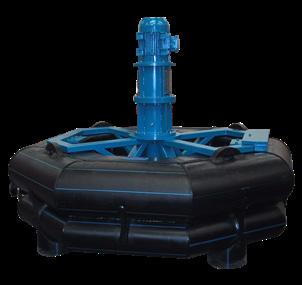
Shortly thereafter, in 2004, the company was awarded its first floating pump project for the mining sector. From that moment on, this product line underwent significant evolution, consolidating itself as one of the most sought-after in metal mining for applications in tailings dams, dewatering, and leaching pools.
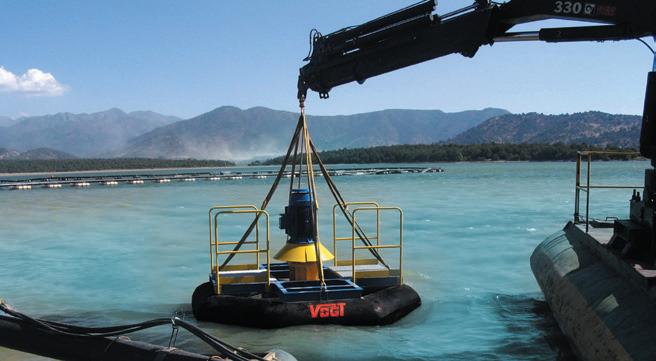

The development of mining projects identified the need to expand the range of high-end industrial products. To this end, a cooperation agreement was established with a leading European company, providing access to larger equipment and strengthening the capacity to serve key market segments in both industrial processes and mining.
At the same time, an investment program in engineering and development was launched to create a proprietary line of process pumps based on existing standard water pumps. As a result, the MD Series was developed in the following years, designed to operate in more demanding processes.
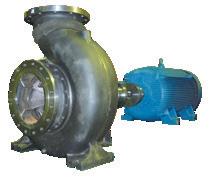
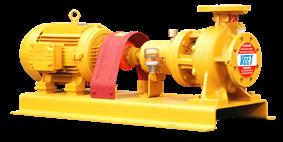
At that time, new computer platforms were transforming businesses, so an investment program was launched in equipment and systems to adapt to new technologies and improve efficiency. Online billing, inventory, and logistics systems replaced bureaucratic processes, centralizing information on digital platforms.
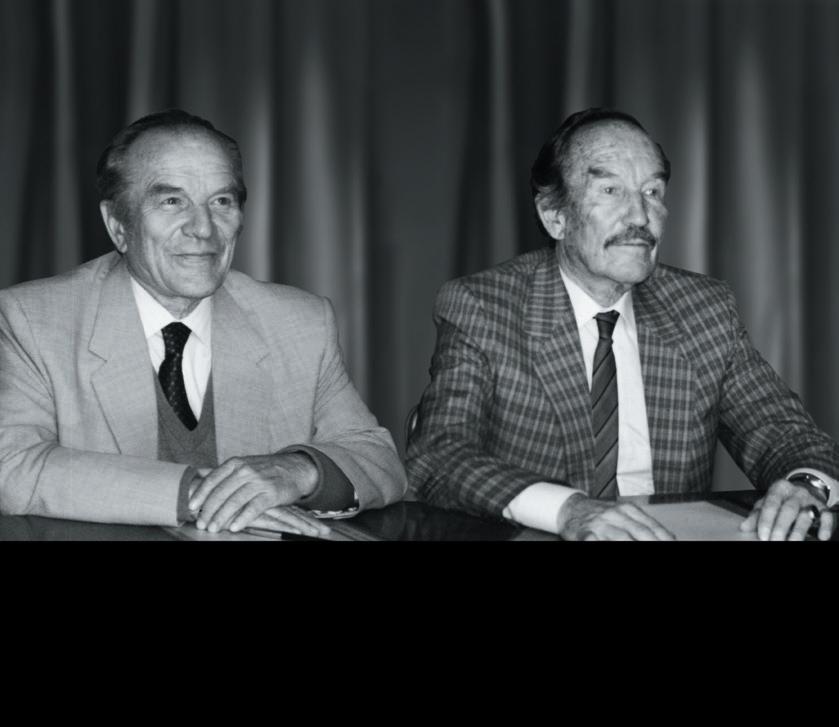
In 2004, within a few months of each other, brothers Otto and Fritz Vogt passed away, bringing to an end a remarkable business partnership between the three brothers that had lasted for several decades. From then on, a generational change began in the ownership of the company and a new board of directors was formed, made up mainly of independent professionals.
brothers
The first project for special steel pumps for the mining market has been awarded.
The 50th anniversary is being celebrated.
That same year, the company celebrated its 50th anniversary with several advances in its goal of strengthening its presence in mining. It was awarded its first project for special steel pumps for handling acidic liquids, consolidating its capacity to develop and manufacture specialized solutions for demanding industrial environments in Chile.
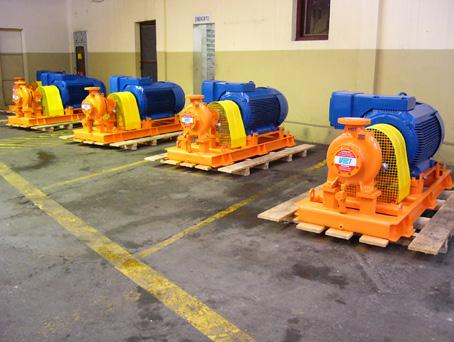
The first patent for the low-suction vertical cantilever pump is obtained.
The ISO 9001 certification process begins.
The year 2005 marked the beginning of the ISO 9001 certification process, which signaled the start of a new phase focused on streamlining internal processes, establishing standards, and fostering a culture of continuous improvement.
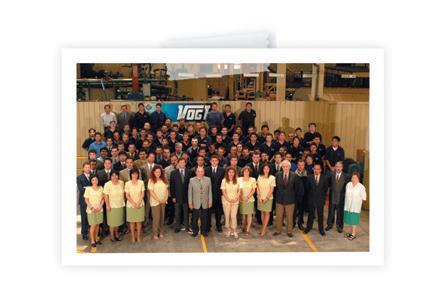

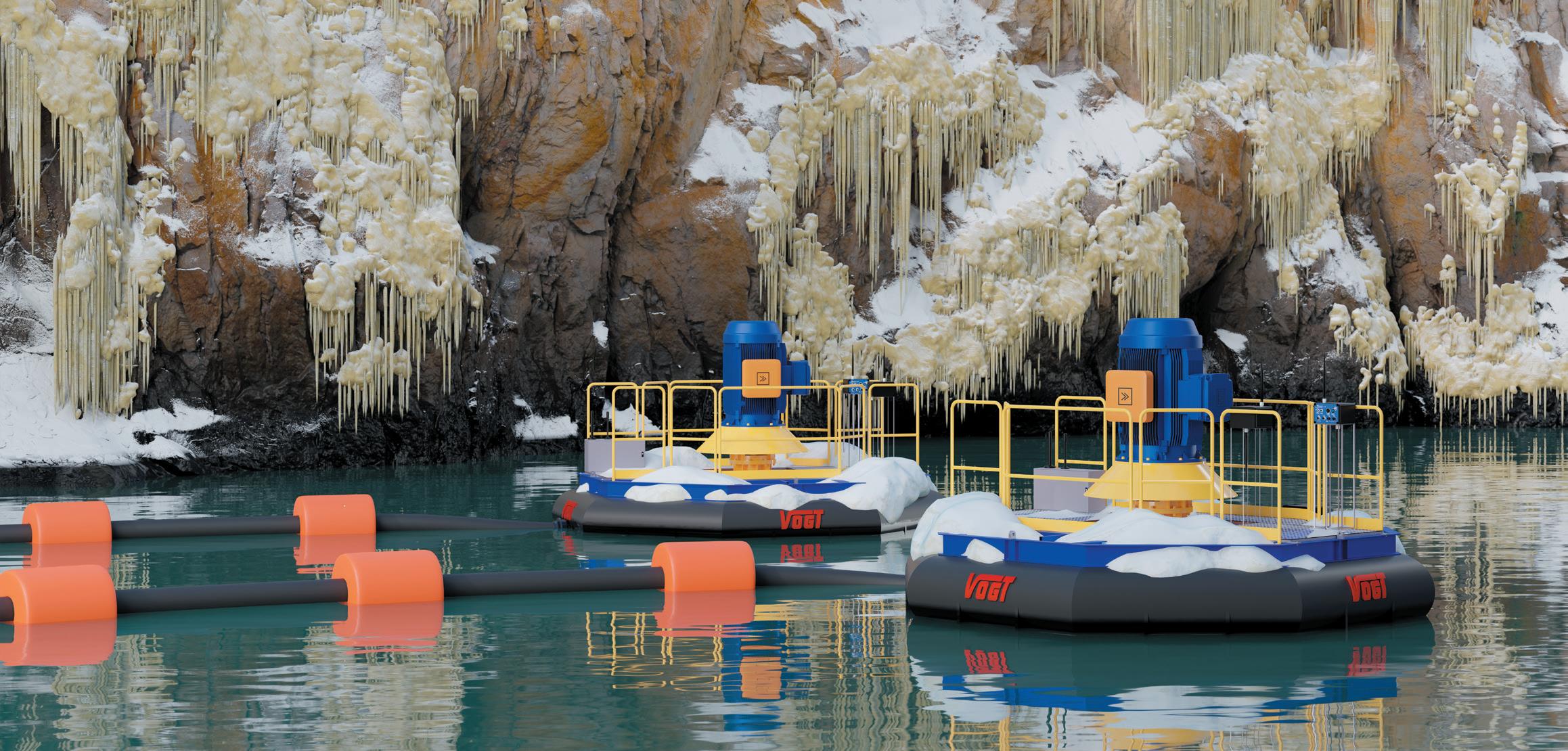
The first project for mine drainage was awarded, using pumps in ponds for large-scale mining.
These achievements drove the company's progressive entry into the mining sector, enabling it to achieve annual revenues of close to US$ 10 million and paving the way for a greater presence in this field.


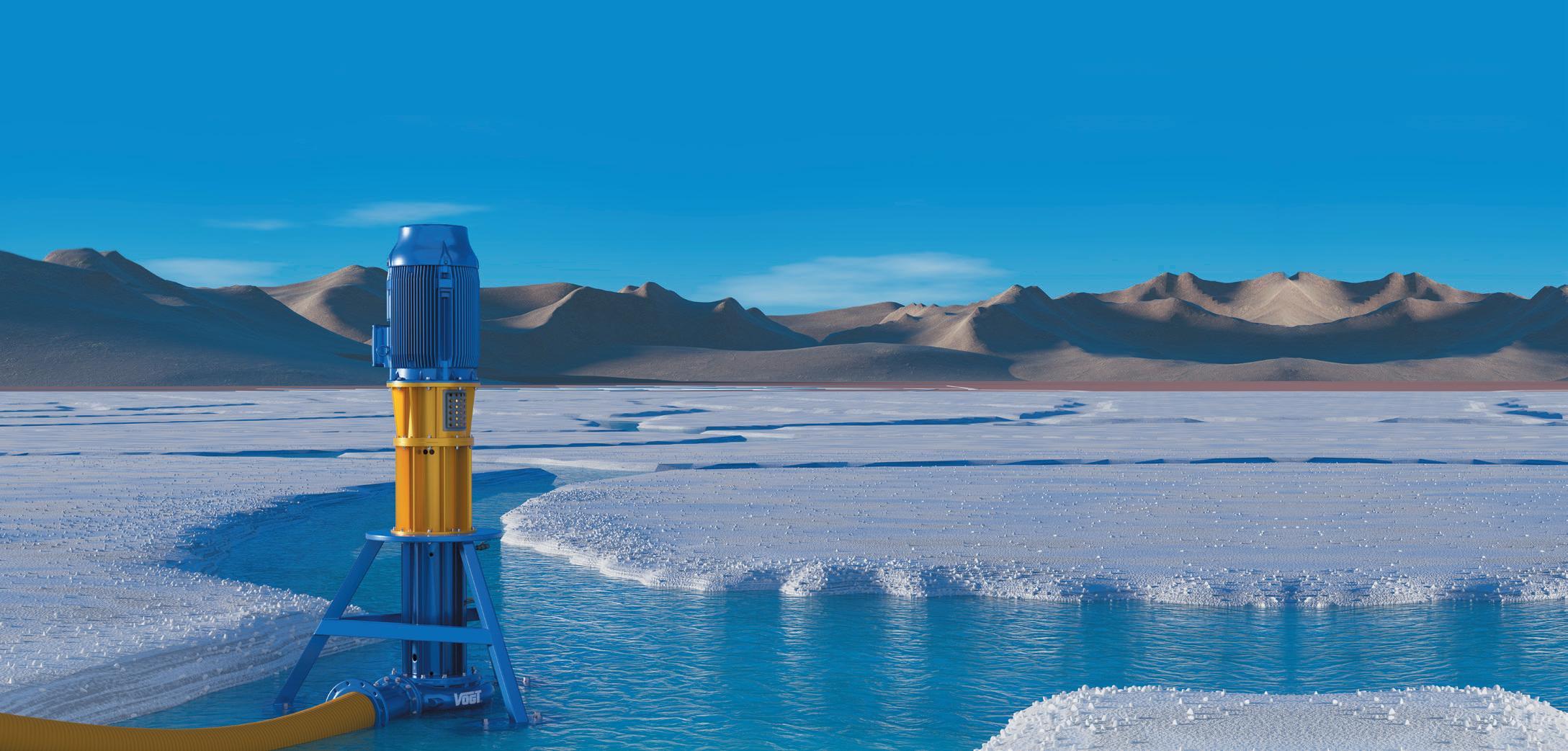
In addition, it was awarded the first package of low-suction pumps for lithium mining in the Salar de Atacama, developing a remarkable innovation for non-metallic mining, a sector that was booming at the time.




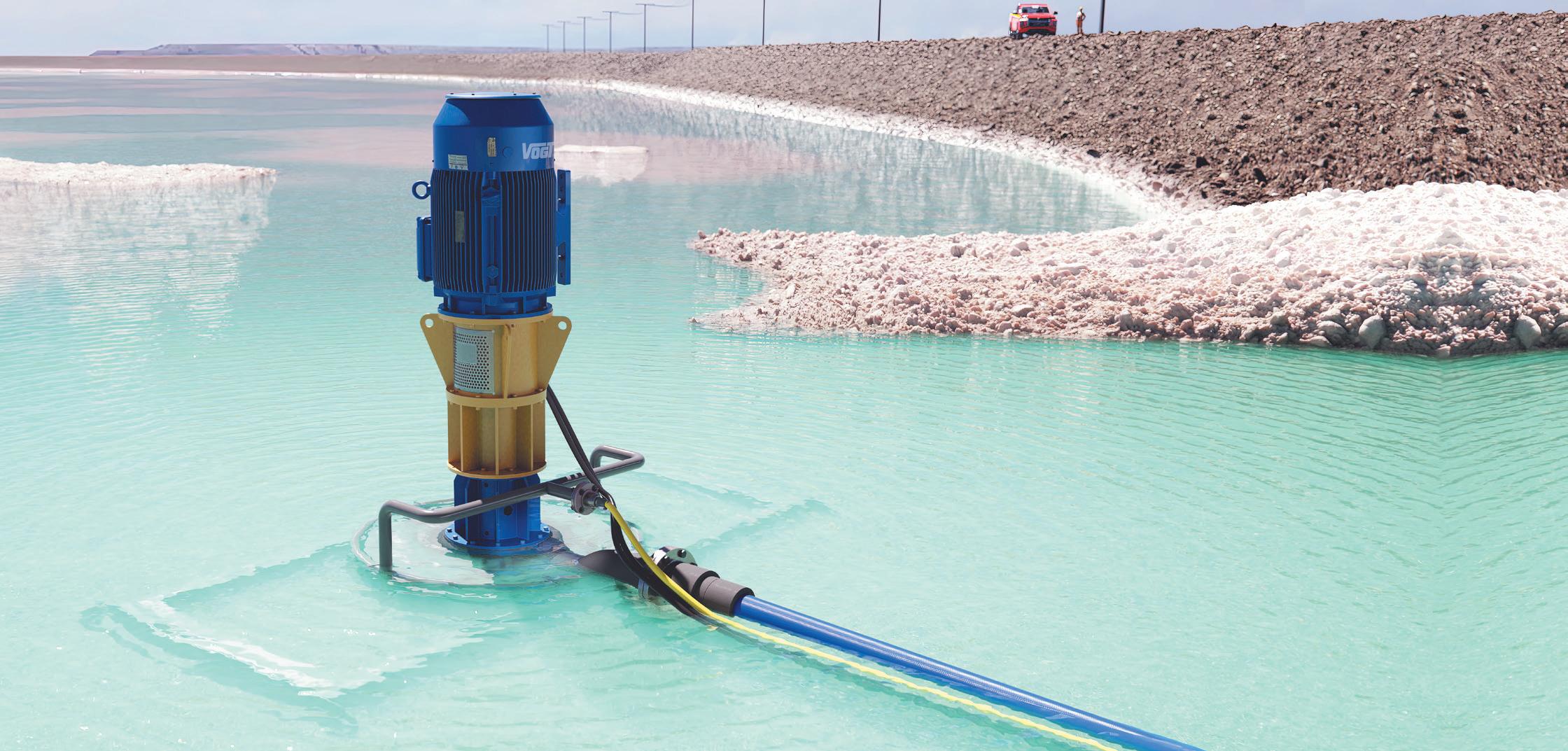
The design of this system has evolved over the last 20 years to operate stably in shallower wells with minimal submergence.
It incorporates a real-time washing system that reduces interruptions in the pumping system, which has improved the performance of the pump fleet used in salt flats in both Chile and Argentina.



For the iconic Costanera Center, we designed and integrated a complete pumping system capable of meeting the challenge of efficiently supplying a 62-story building with five underground levels. To achieve this, we developed a system of impeller rings located on floors 7 and 44, which allowed the pumping to be scaled in stages, optimizing pressure, reducing equipment size, and significantly lowering infrastructure costs. From a large pump room in basement -5, drinking water, firefighting systems, and air conditioning are pumped to the main consumption points of the complex: mall, clinics, supermarkets, offices, and hotel.
For the Titanium Park project, we developed two integrated drinking water systems in SKID format, completely designed and assembled in Chile. Each unit includes vertical pumps with variable frequency drives (VFD), programmed PLC, valves, wiring, and all the components necessary for efficient operation. The main challenge was to install these systems in the underground levels of the complex, which required a precise modular solution. Thanks to intelligent engineering, we were able to assemble each system on site, ensuring a reliable supply of drinking water for the park's three towers.

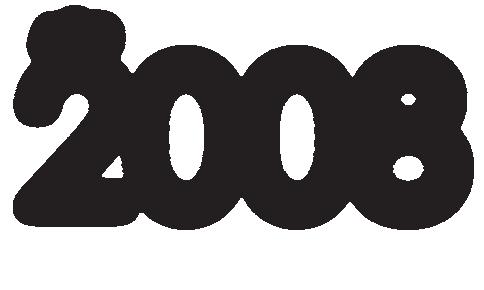
The global economy is beginning to recover from the subprime crisis of 2008.
The year 2010 was marked in Chile by the earthquake and tsunami of February 27. The Chilean population exceeded 17 million, and globally, the economy was still recovering from the 2008 financial crisis. In the technological sphere, social networks, with the expansion of Facebook and Twitter, were transforming the way companies and people communicated.
That year, the San Miguel plant manufactured the largest floating pumps it had ever produced for large-scale mining. This equipment, designed to transport up to 1,000 m³ per hour, and equipped with 450HP engines,
More than 100,000 VOGT pumps have been manufactured.
The population of Chile exceeds 17 million inhabitants.
100.000 MANUFACTURED PUMPS
were entirely produced and tested at our own facilities. This milestone reaffirmed our ability to develop high-performance solutions and meet the demands of the mining industry within highly competitive timeframes and conditions.
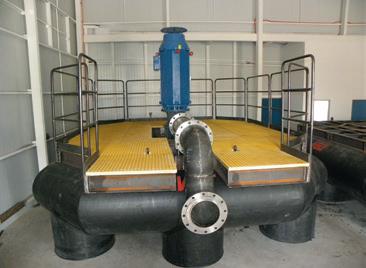
At that time, the total number of bombs manufactured exceeded 100,000 units.
The 60th anniversary is being celebrated.
The largest floating pumps in its history are manufactured, for 1,000 m³/h and 450 HP engines.
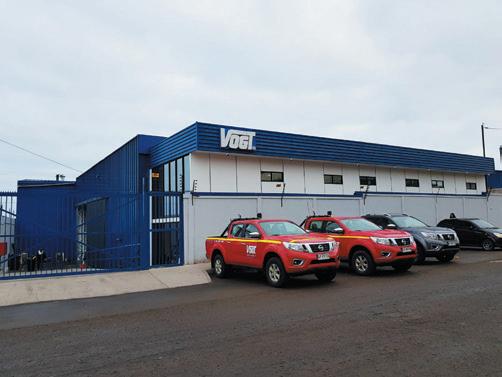

The company's distribution network is expanding in Copiapó, Antofagasta, Concepción, and Puerto Montt.
In 2014, the company celebrated its 60th anniversary and achieved significant milestones. It expanded its territorial presence with its own distribution network in Copiapó, Antofagasta, Concepción, and Puerto Montt.


Awarded one of the most important projects for pumps and floating platforms for the main tailings dam of a world-class copper mining operation.


Exclusive agreement with one of the world's largest pump companies, boosting our presence in technical irrigation.
In 2015, an agreement was reached with one of the world's largest pump companies for a long-term strategic partnership, integrating the program of standardized pumps imported for assembly and exclusive marketing in Chile. This agreement proved highly beneficial for both parties, achieving high market share and customer satisfaction, especially in the technical irrigation sector, where thousands of these pumps continue to operate successfully to this day.


Project awarded for grade 12 titanium VTP pumps, manufactured in Asia and assembled at VOGT.
In 2016, another major milestone was achieved with the award of the first VTP vertical pumps built in grade 12 titanium. The pumps, produced in Asia and assembled at the San Miguel plant, had to meet demanding technical specifications and deadlines. This project paved the way for future participation in highly selective projects, to which few suppliers specializing in highly corrosive environments are invited.
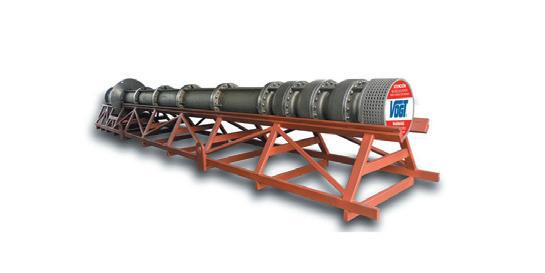
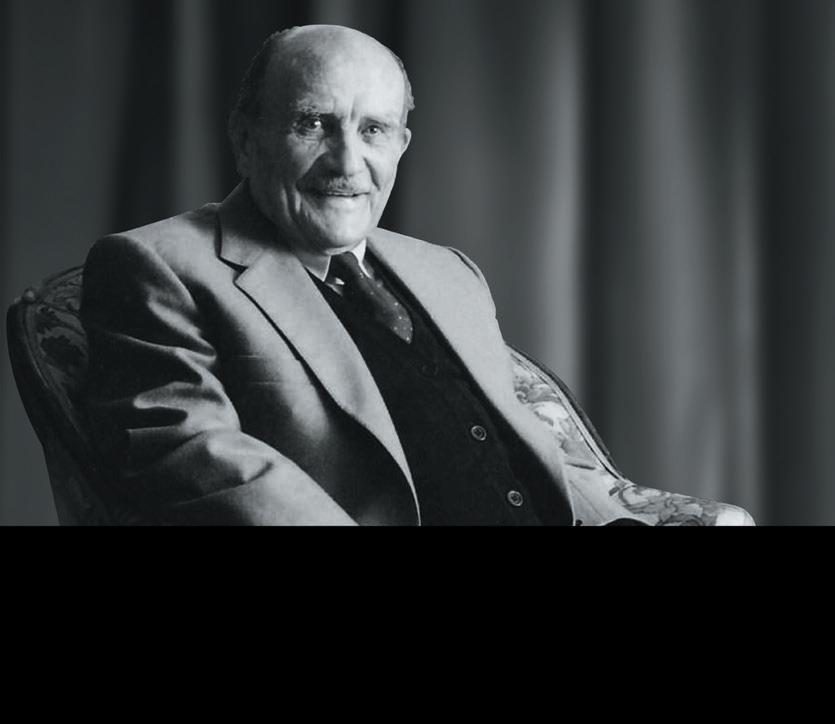
In January 2017, Richard Vogt Lindner, the last surviving founding brother, passed away. Until a few months before his passing, he remained active and committed, leaving behind an invaluable legacy.

The internationalization of the mining business began with the award of the first project for low-suction vertical pumps for lithium mining in Salta, Argentina. This project not only represented a technical and logistical challenge, but also marked the beginning of the company's international expansion and laid the foundations for growth in other countries that continues to this day.


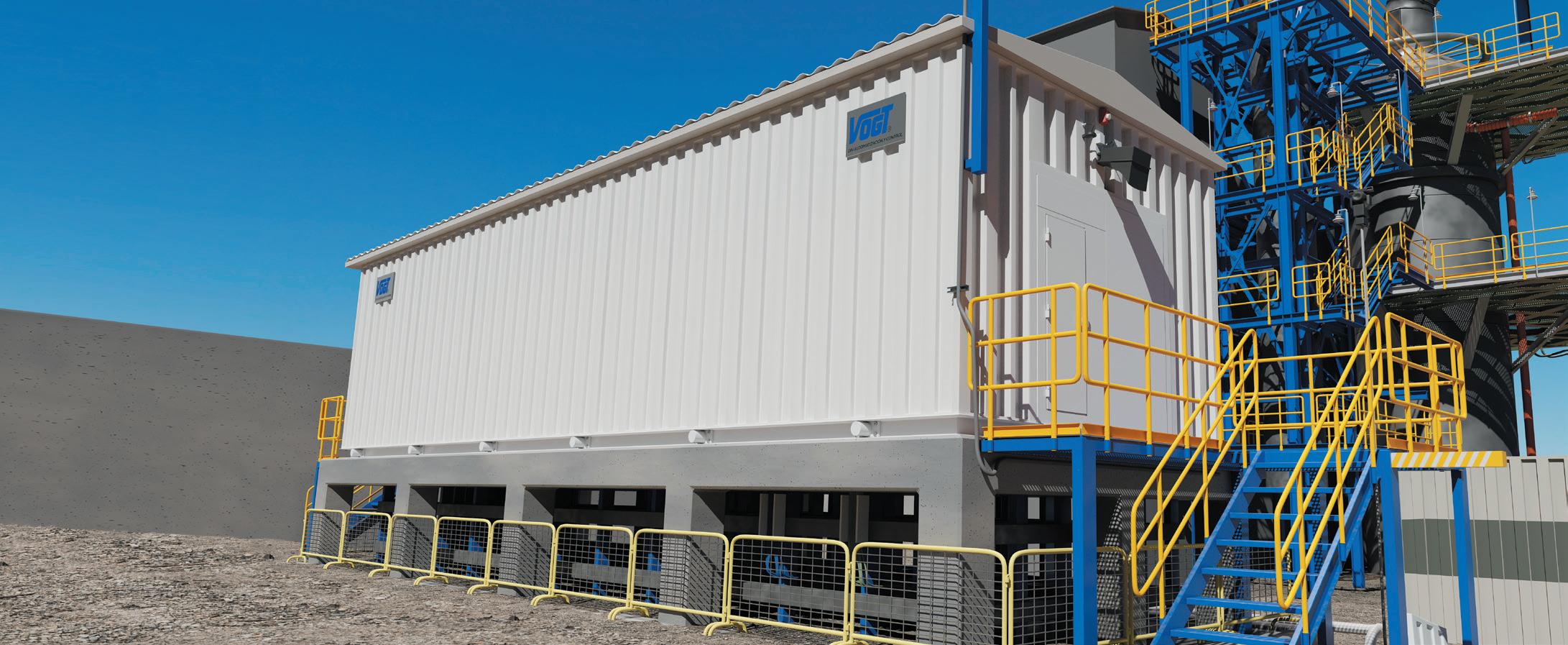
An important modular low-voltage electrical room was awarded for a mining operation in northern Chile, designed to withstand extreme conditions and high safety standards. Measuring over 16 meters long and 5 meters wide, this prefabricated solution became a true nerve center for electrical control, reinforcing our presence in the heart of Chile's copper region.

Duringthoseyears,thecompanywasawardeda new project that required pumps and accessories made of grade 3 titanium. For the first time, these were process pumps with VOGT's own design, produced in China. To this end,theVOGTmodelsweresenttoaspecialized foundry in that country, complying with all the specifications and technical requirements demanded for a project of this magnitude. This milestone allowed the company to further expand its technical, logistical, and financial capacity, strengthening its reputation in the market.
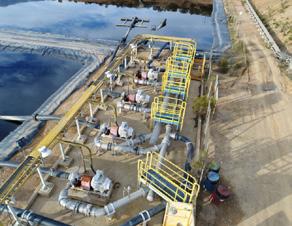
In February 2019, a change in leadership took place in the General Management, successfully fulfilling the succession plan defined by corporate governance. After 25 years of leadership, Ricardo Vogt B. closed a cycle in which the second generation of the family was at the helm of the company's management.
He was replaced by Alberto Campos Villegas, who had previously served as commercial manager, ushering in a new era marked by significant strategic and operational challenges. These included the implementation of a new business strategy aimed at strengthening long-term sustainable growth and the relocation of the production plant.

This last challenge involved the development of an ambitious project, which included the acquisition of a 10,000 m² property in the industrial sector of Quilicura, as well as the complete relocation of operations while they remained in operation. This was an unprecedented process for the organization and its team, requiring high levels of planning, coordination, and commitment.
Project awarded for grade 3 titanium process pumps and accessories.
There has been a change in the General Management, with Alberto Campos V. taking over.

With these objectives in mind, the COVID-19 pandemic struck, hitting the world and Chile hard in March 2020 and radically and profoundly transforming the way we had been working up to that point. Health restrictions and lockdowns forced us to quickly adapt to remote working, implementing digital tools to maintain operational continuity in a physically segregated and safe environment for our employees. While the challenge was great, it also opened up new opportunities. The mandatory telematic format allowed for greater contact and closeness with both clients and the team distributed across different regions of the
The COVID-19 pandemic has driven the rise of remote working and marked a new way of doing business through virtual meetings.
country—composed of 150 people, mostly professionals and specialists —thus strengthening internal collaboration and offering comprehensive advice to decision-makers, which optimized response and service capacity.
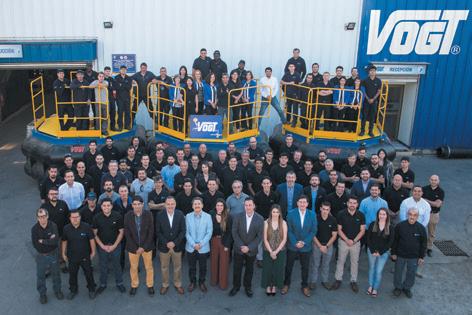

The company was awarded the contract to design and supply the largest nitrogenpressurized water hammer tank in its history, destined for a pulp mill in Chile.
The project included a 50,000-liter tank and a second 30,000-liter tank, both designed to operate at a pressure of up to 10 bar and strategically located along the water supply line. Each station has its own PLC that communicates with the others, allowing for coordinated control and full integration into the customer's Distributed Control System (DCS).


The new 10,000 m² headquarters in Quilicura is inaugurated.
Sales of floating pumps for mining continued to increase, with annual turnover reaching US$20 million, reflecting growth and consolidation in the sector.
After a year of work, on June 13, 2022, production, commercial,andadministrativeoperationsofficiallybegan
Annual sales exceeding US$ 20 million.
at the new headquarters located in the municipality of Quilicura, Santiago. This event marked the completion of the new administration's first challenge, incorporating new, modern, and functional infrastructure forgrowthplans.
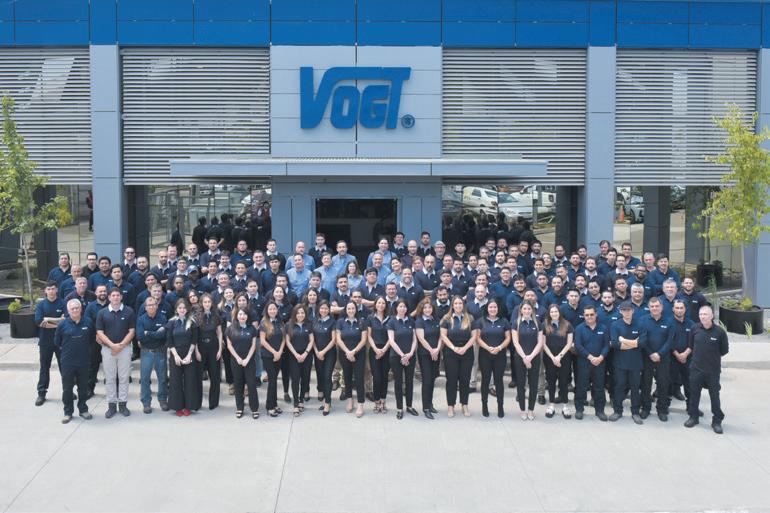
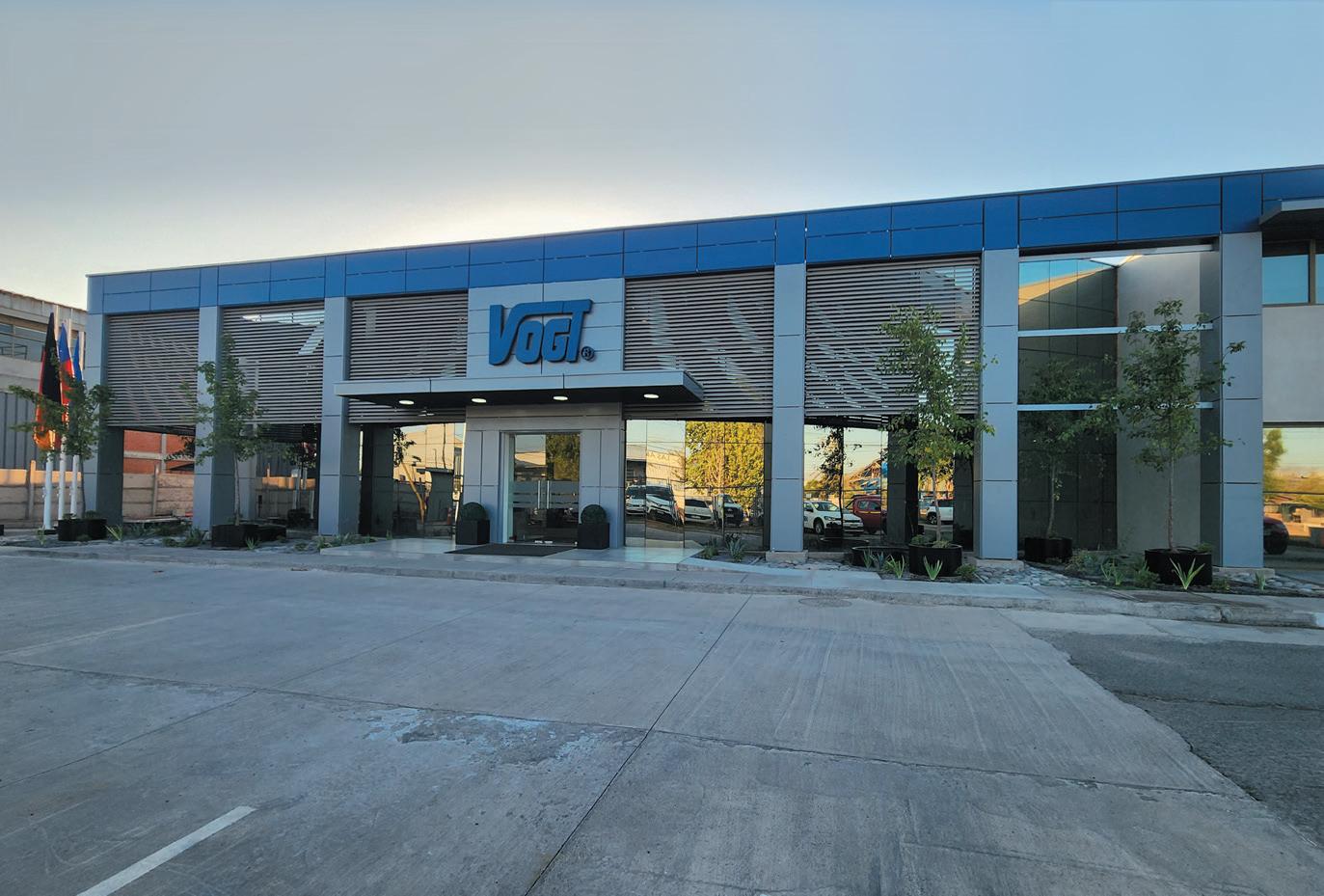


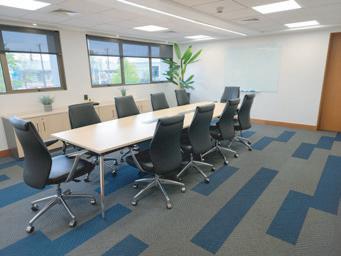


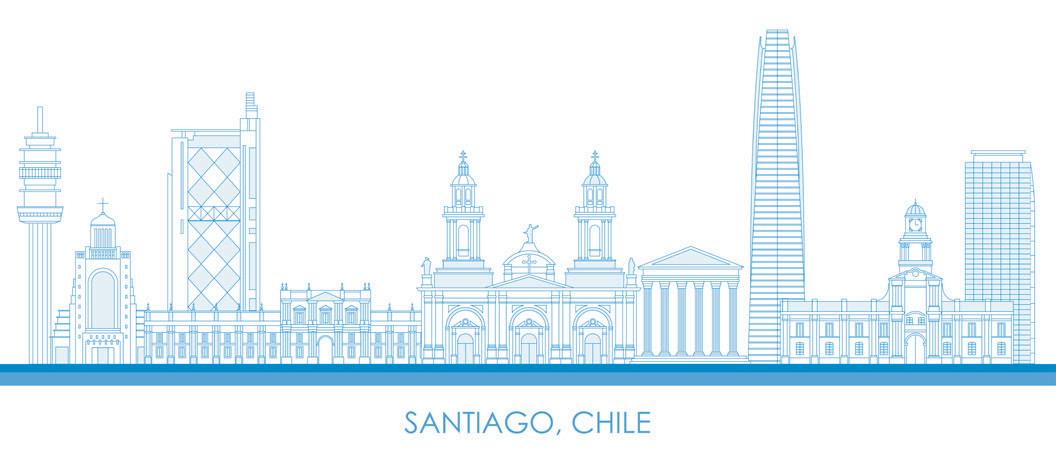
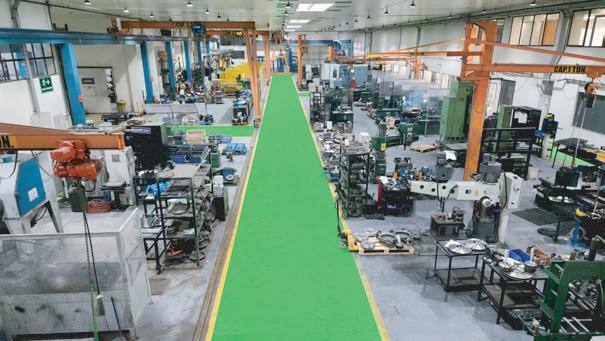

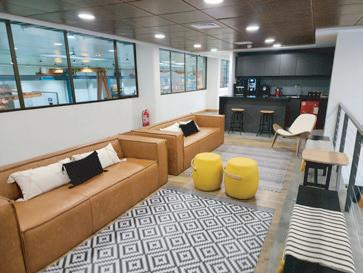







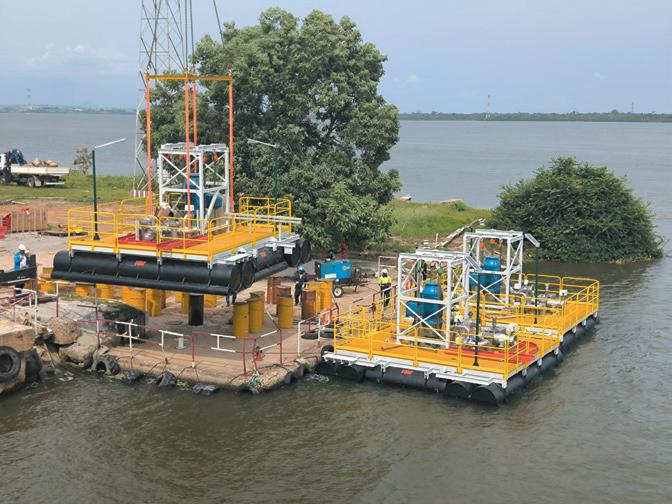

During 2023, the company expanded its presence in the global market by winning its first project in Africa. This milestone involved the supply of a floating pumping system designed to operate in an estuary and supply water to the cooling system of the turbines at a 400 MW power plant in Côte d'Ivoire. This represented a significant challenge, requiring complex coordination at the human, technical, and logistical levels to meet the rigorous requirements established.
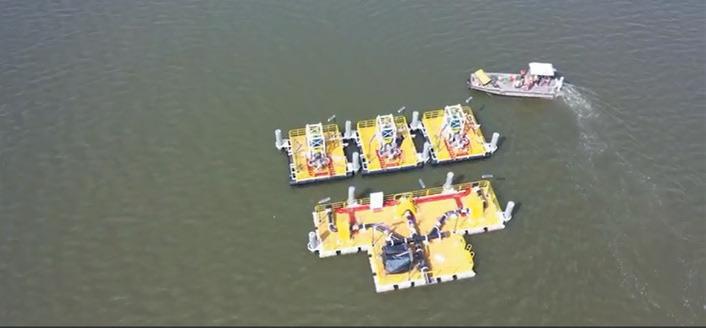

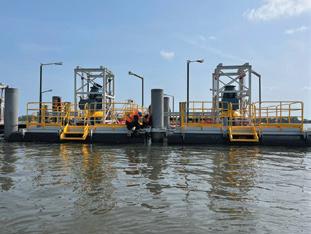
First project in Africa with floating pumping system awarded in Ivory Coast.
Representation agreement signed with South Korean company to expand presence in oil & gas, desalination, and thermoelectric power.
Cooperation agreement established with Eurasian supplier to promote multistage pumps and ISO 2858 standardization.
In 2024, a cooperation agreement was established with a Eurasian supplier to enhance the line of high-pressure multistage pumps and the series of standardized process pumps in accordance with ISO 2858. This further consolidated the new business model.
On the other hand, a representation agreement was signed with a major South Korean multinational company to expand the company's presence into new applications and sectors, including Oil & Gas, seawater desalination plants, and thermoelectric plants, thereby strengthening its position in industrial processes.
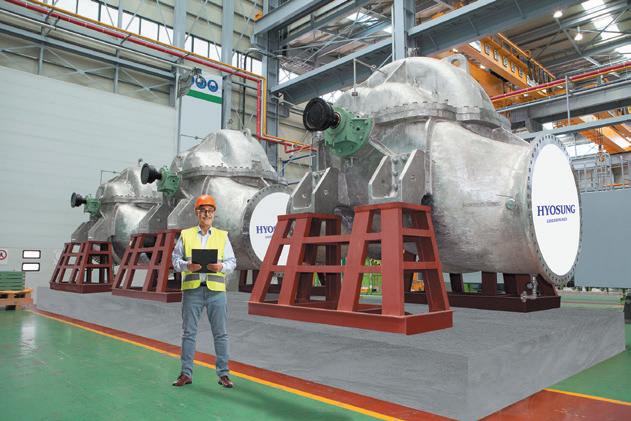
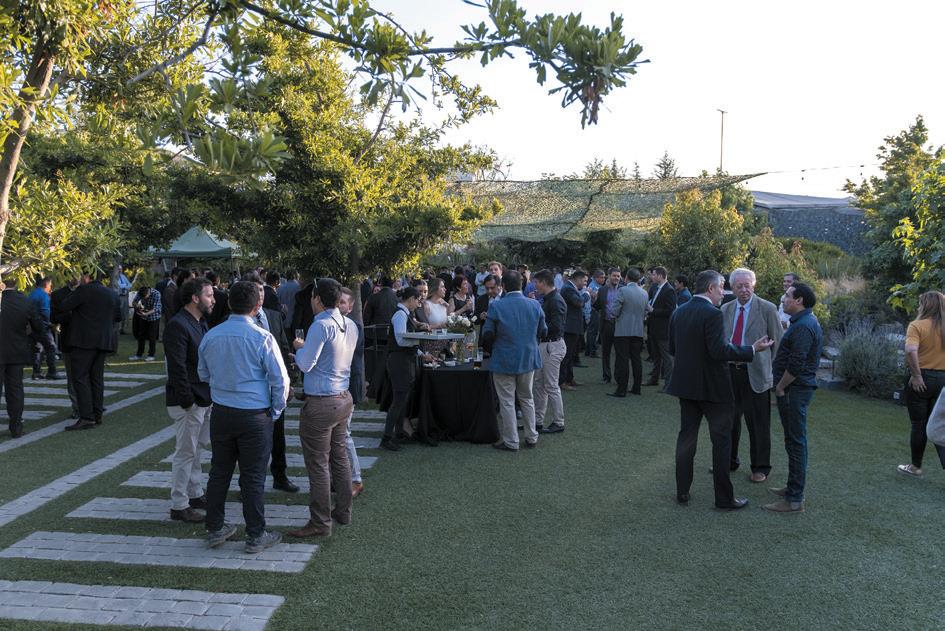

Complete gallery of the event


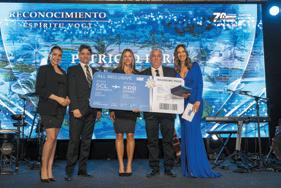




At the end of this journey through history, we arrive at the commemoration of 70 years since that first day of operation in a small workshop in San Miguel. All employees, board members, and members of the Vogt family participated in an internal event to celebrate this important anniversary, which was also attended by a select group of special guests.
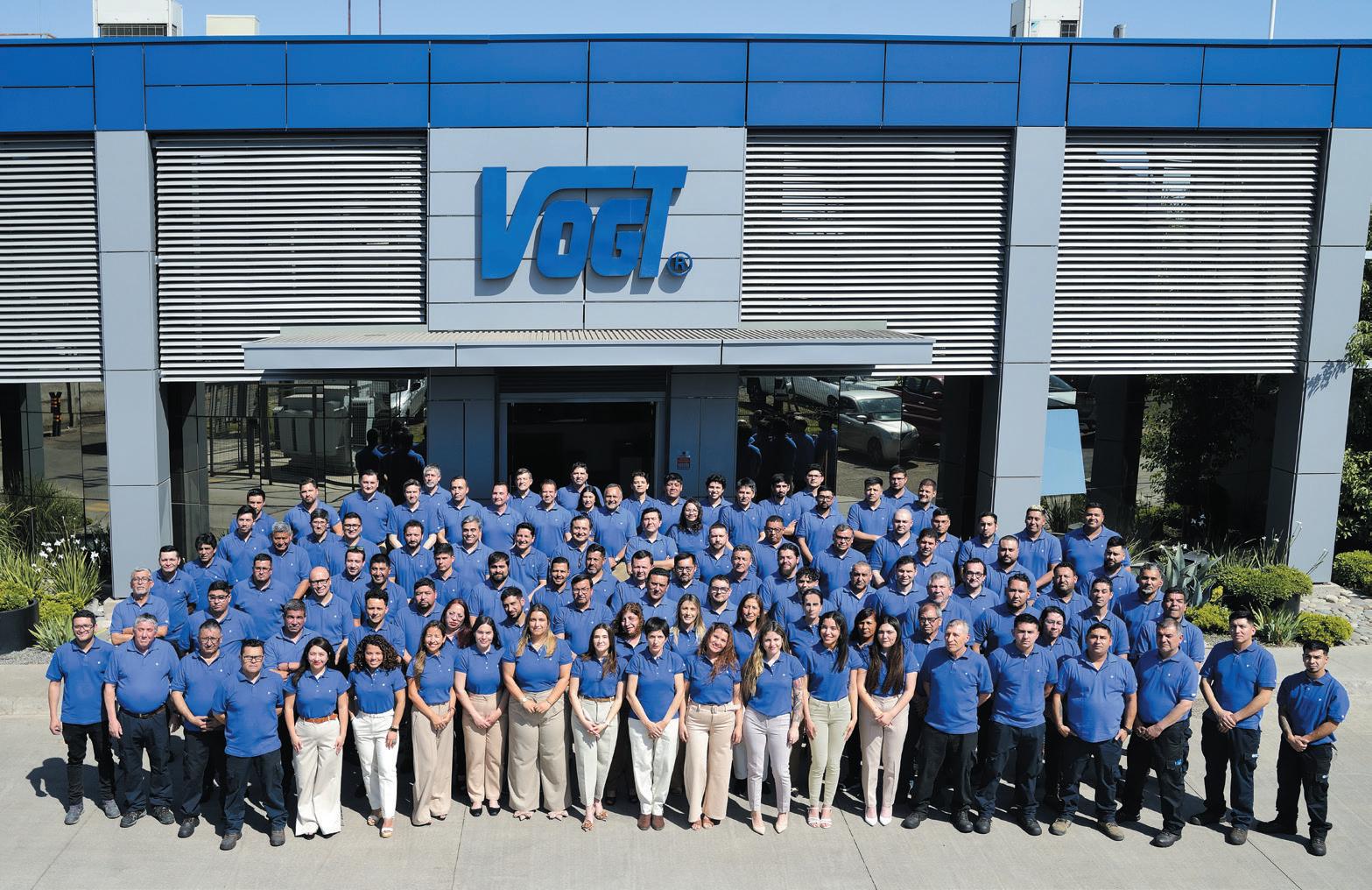

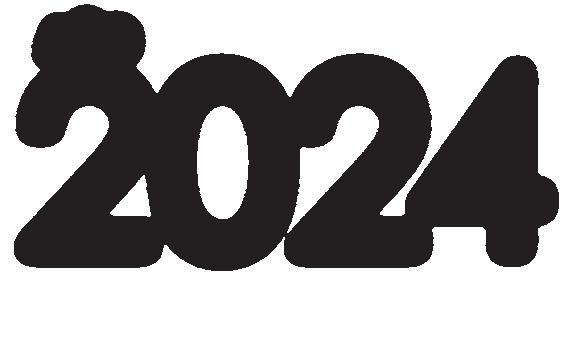


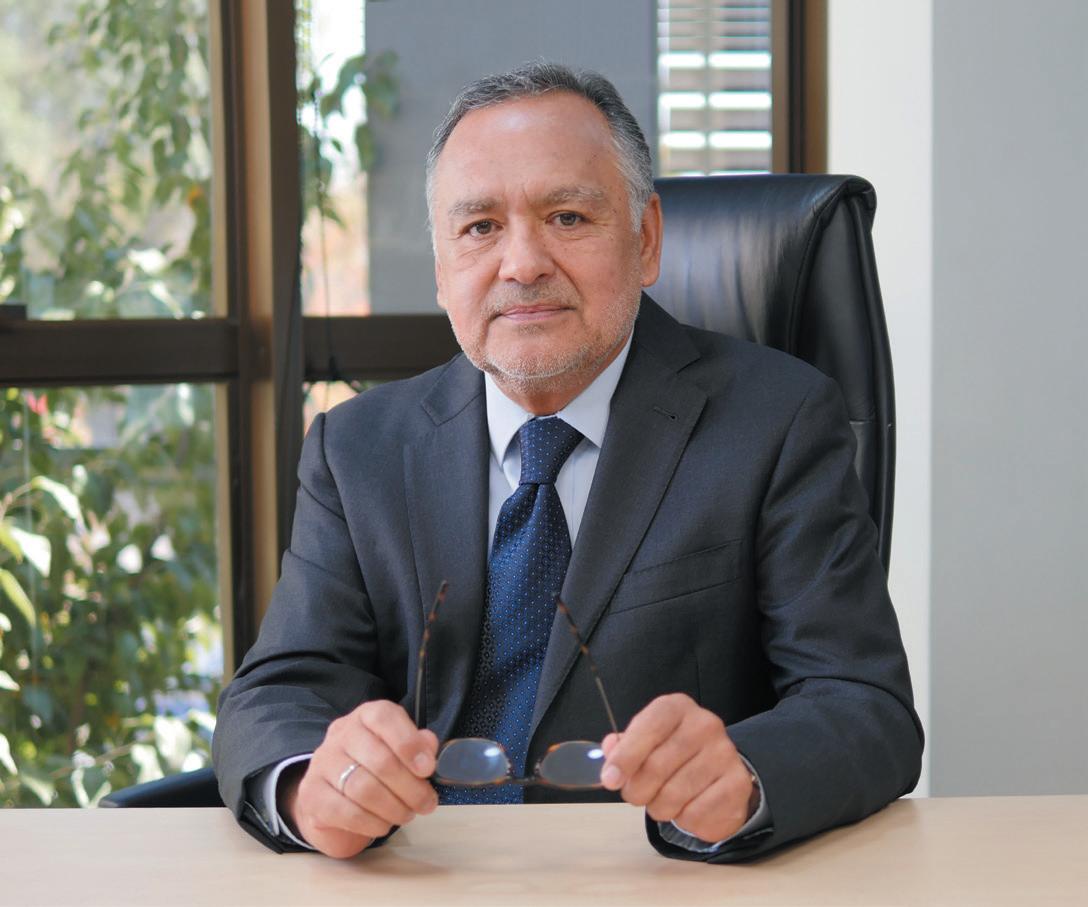


Today, our company is focused on consolidating its position as a leader in the mining industry, standing out for its ability to integrate complex solutions that require the interaction of multiple engineering disciplines. We have evolved from a large-scale pump manufacturer to a specialized, boutique supplier that designs, assembles, and markets different types of pumps, integrating them with other specialties to offer pumping solutions tailored to the specific needs of each customer.
This transformation has been made possible by a team of highly qualified professionals whose knowledge and experience enable us
to tackle pumping challenges in demanding environments, delivering high value-added solutions. The development and retention of specialized talent has been key to strengthening our value proposition.
To enhance this business strategy, the company has made significant investments in infrastructure and strategic capabilities. These include the construction of a new manufacturing plant in the municipality of Quilicura and the modernization of machinery in the machining area.

In addition, a state-of-the-art test bench has been incorporated, capable of testing pumps up to 3,000 m³/h, with pressures up to 60 bar and power ratings up to 500 kW, expandable according to specific requirements. This allows us to validate the performance of our equipment, ensuring high standards of quality and reliability.
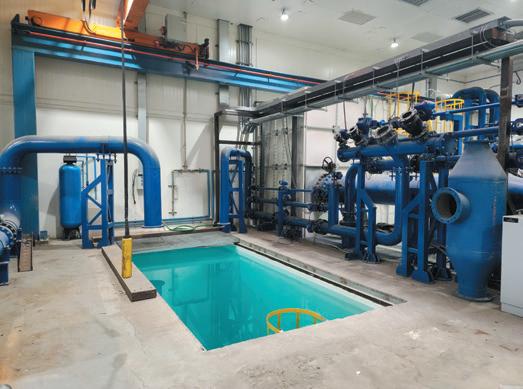
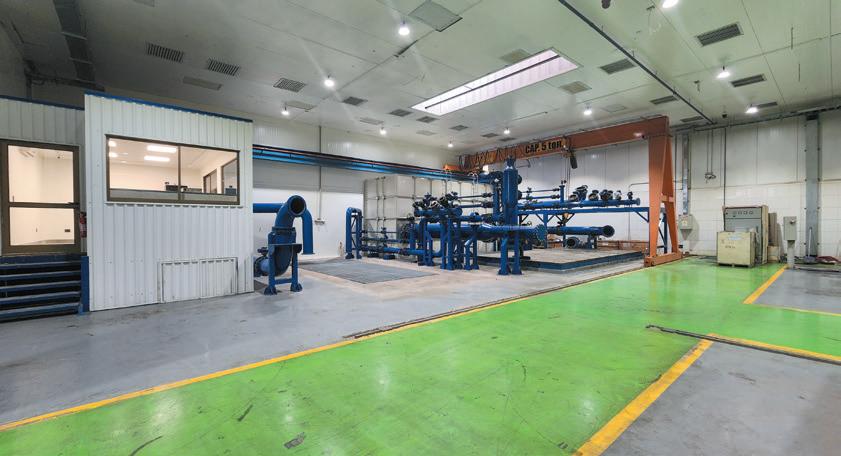
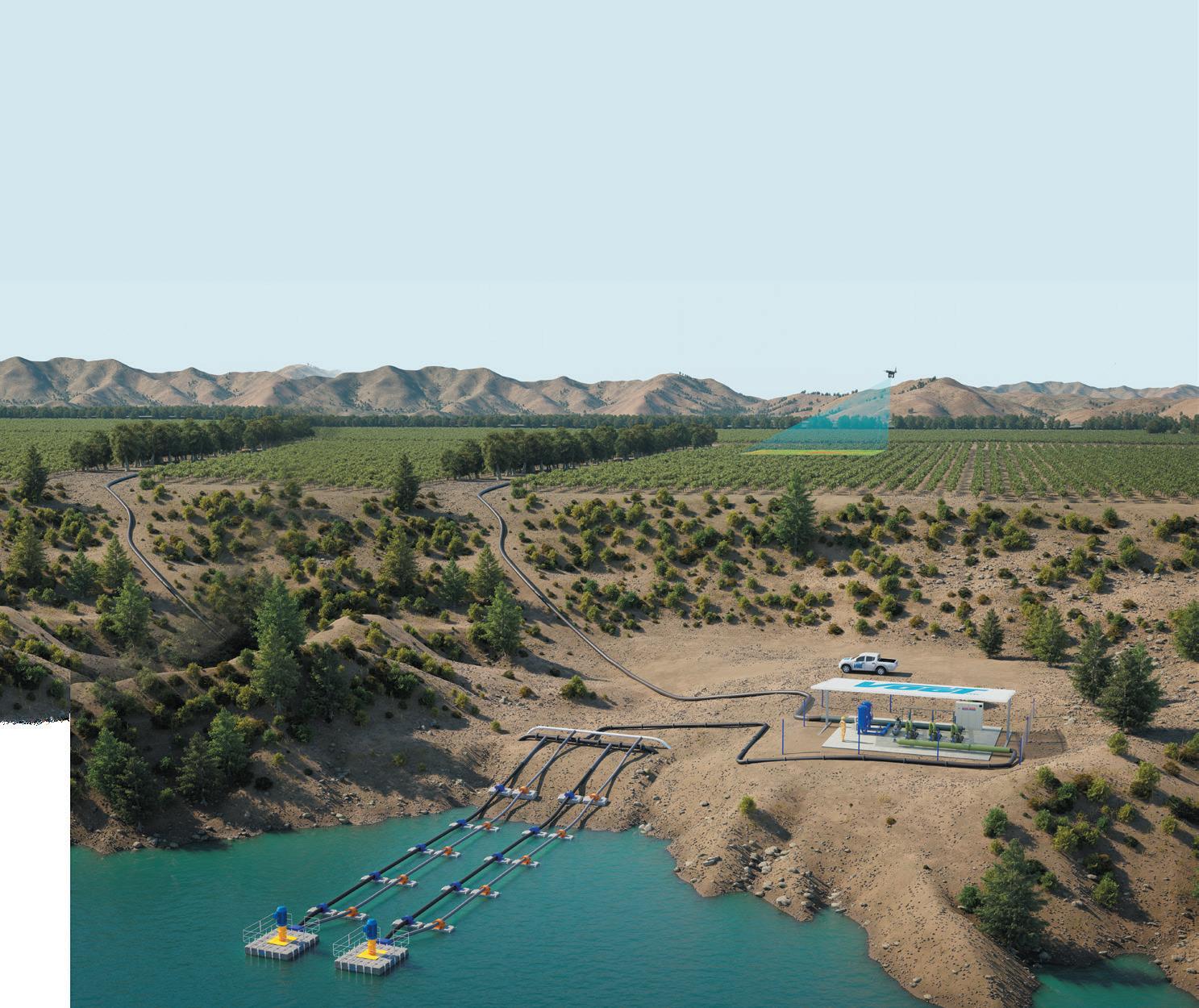
In terms of logistics, we have contracted an external distribution center of 1,000 m², which has improved coordination with customers and suppliers, optimized inventory turnover, and freed up space at our headquarters, allowing us to increase our operational capacity. We will soon expand our plant by an additional 4,000 m² through the acquisition of a neighboring property.
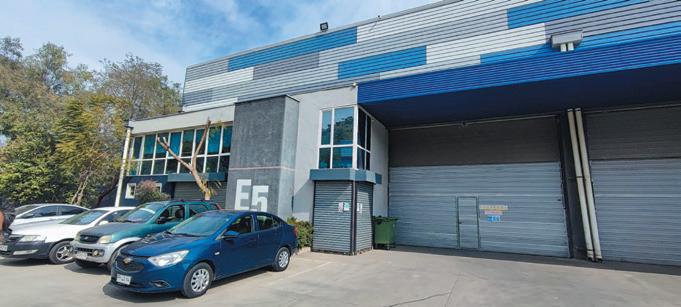
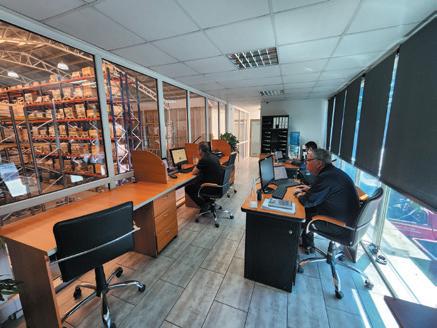
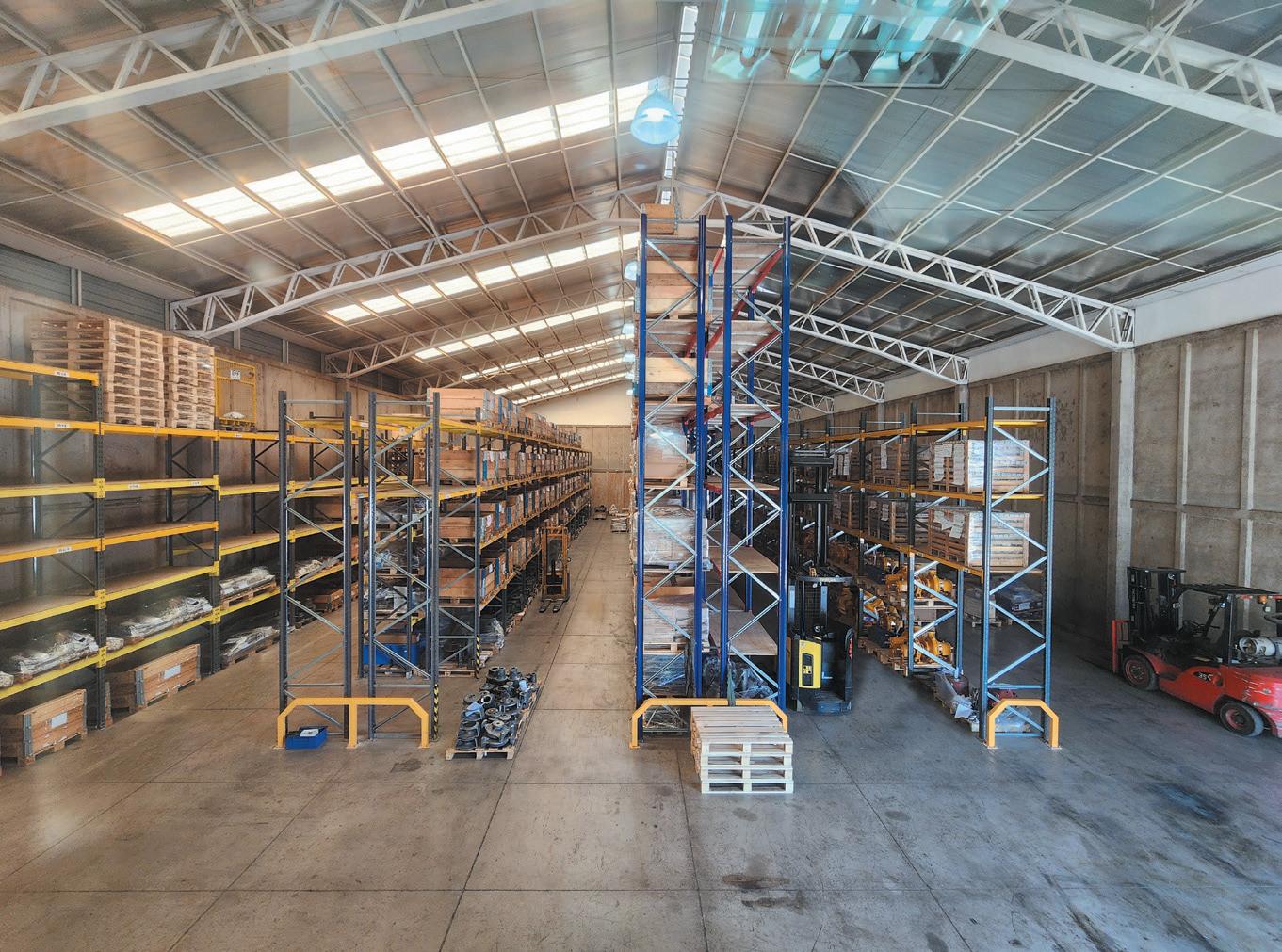

In an increasingly globalized world with a constantly evolving business environment, the company is promoting various initiatives to align itself with best business practices. This includes adapting to an increasingly demanding regulatory framework, addressing key challenges in technology, regulatory compliance, sustainability, and labor management.
With these actions, we reaffirm our commitment to excellence, innovation, and sustainable growth, ensuring that our company continues to be a strategic partner for the industry in the years to come.
At VOGT, we develop high-tech floating pumping solutions that modularly and efficiently integrate all the components necessary for optimal performance: pumps, piping, floats, valves, power and control systems, as well as surge tanks for protection against hydraulic transients. Soon, these systems will be complemented by advanced sensor and monitoring elements that will enable our customers to implement intelligent asset management based on real-time data and focused on operational efficiency.



These systems are in high demand in metal mining, where they play an essential role in dewatering processes and transporting solutions from tailings dams, PLS (Pregnant Leach Solution) and ILS (Intermediate Leach Solution) accumulation pools, or refining solutions, enabling efficient and sustainable use of water resources.
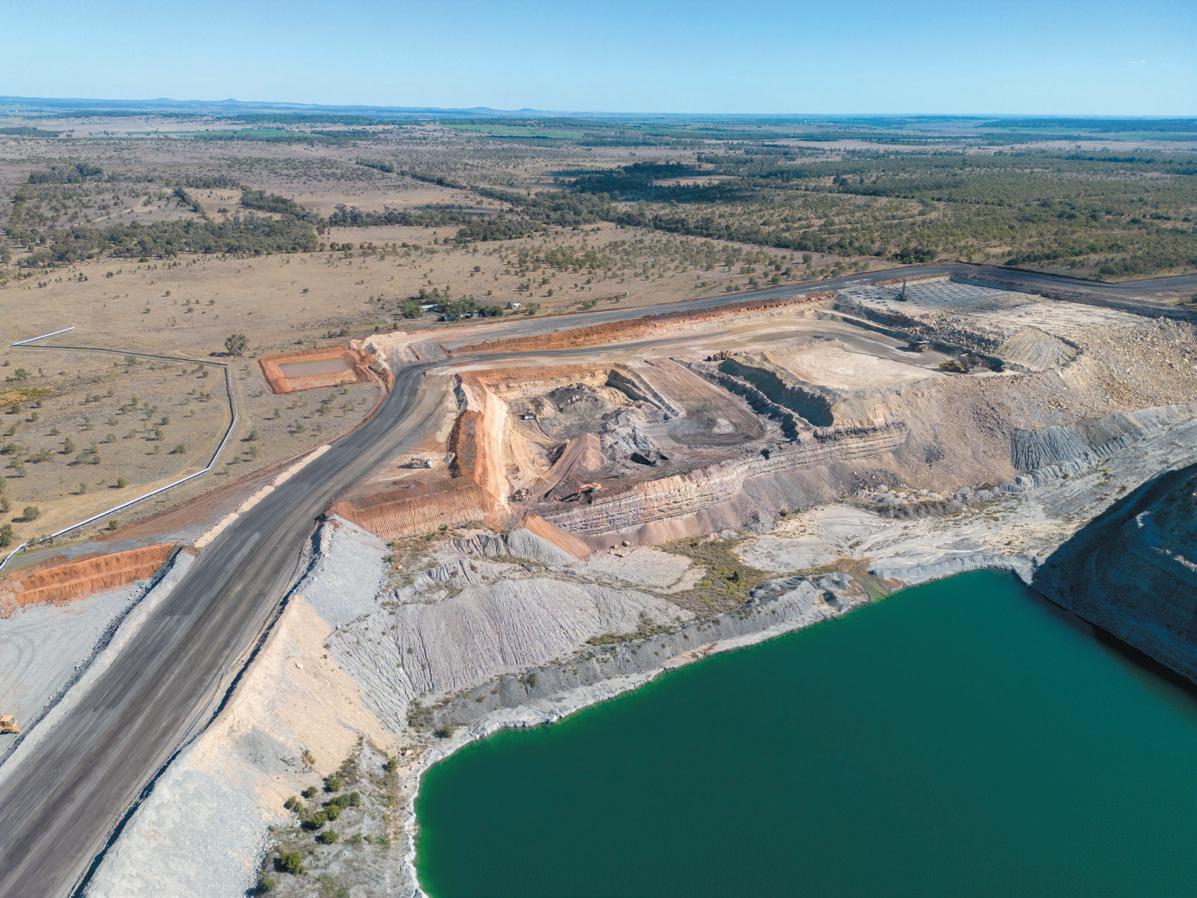
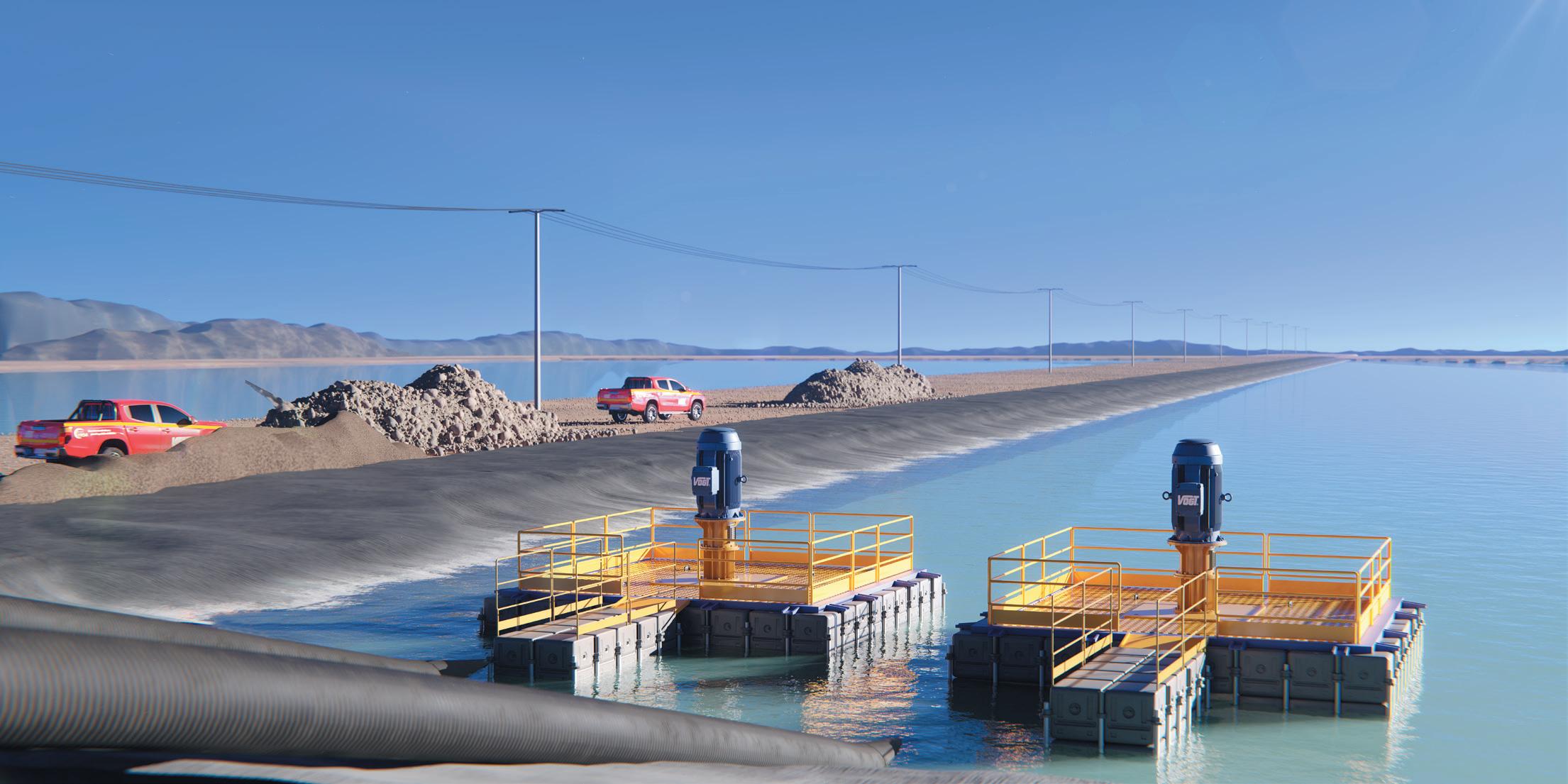
In the non-metallic mining sector, we offer the innovative VCBS Series, a line of low-suction pumps patented by VOGT, specifically designed to maximize the recovery of the final product after evaporation concentration processes.
This equipment operates in extreme and variable environments, such as the most important salt flats in Latin America, withstanding high salinity, extreme temperatures, and variations in the density of the pumped fluid.


Our portfolio also includes horizontal and vertical pumps for agricultural or agro-industrial applications, ideal for technical irrigation systems, such as sprinkler, drip, and/or pivot systems. They are also suitable for handling industrial, potable, soft, or clarified water, among other uses.
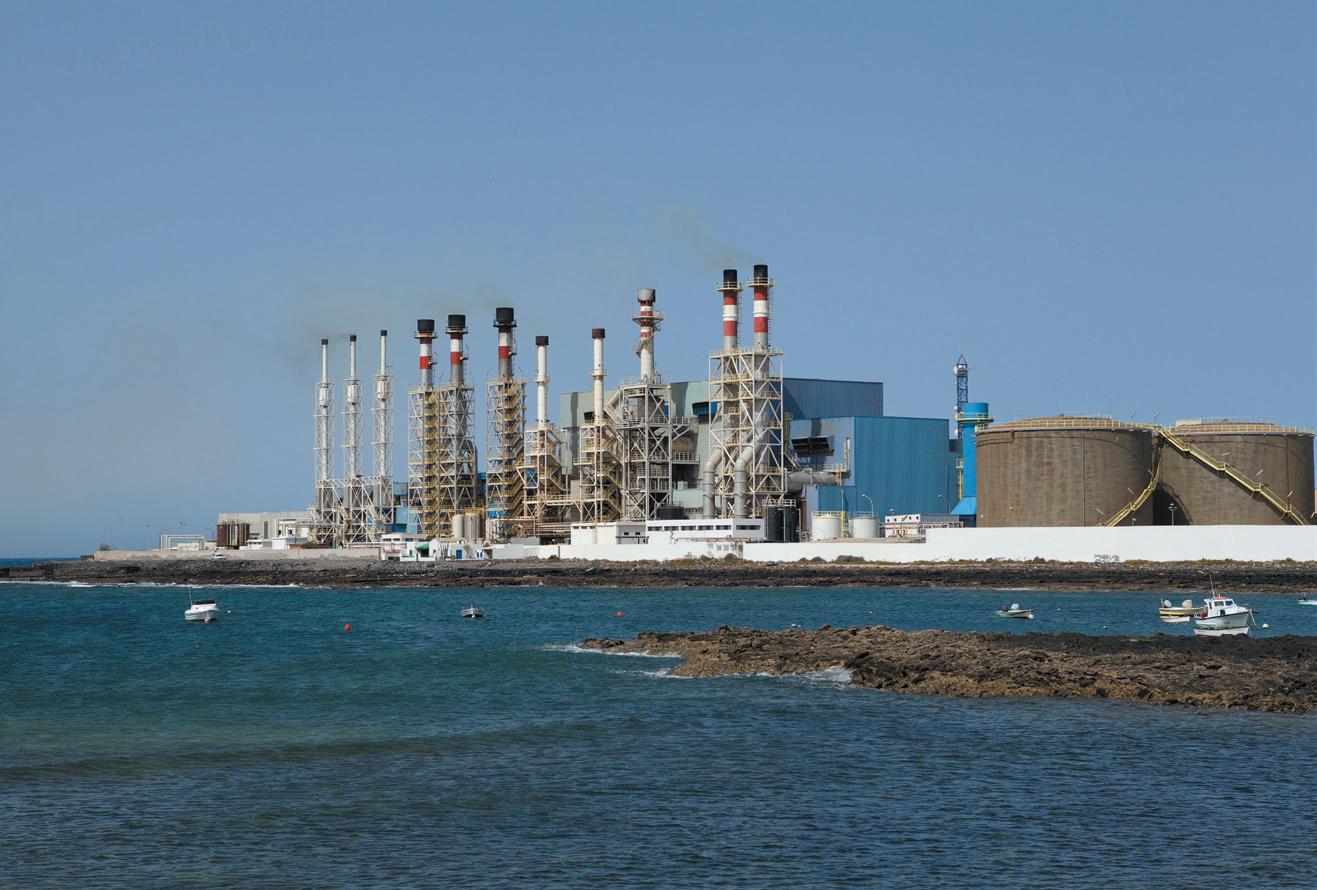
Added to this is a line of high-tech Korean pumps designed to address challenges in emerging sectors such as oil and gas and seawater desalination plants, expanding our presence in strategic water infrastructure projects in Latin America and around the world.
Our commitment to the future focuses on innovation, digitization, market diversification, and international expansion.
We are developing a new line of business based on IIoT (Industrial Internet of Things) through our VOGT DATA® platform. This system will allow our customers to monitor the operation of their equipment in real time, optimizing process management and improving operational efficiency. At the same time, VOGT DATA will give us the ability to know the status of pumps in the field, anticipate failures, and offer more predictive maintenance, ensuring greater availability and useful life of the equipment.


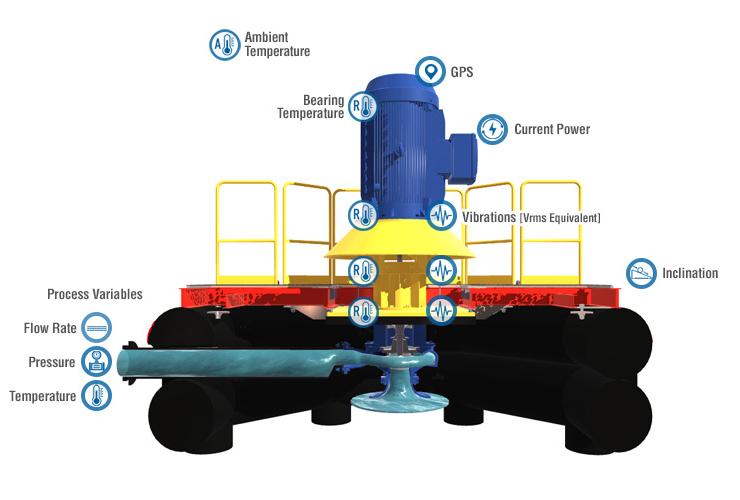
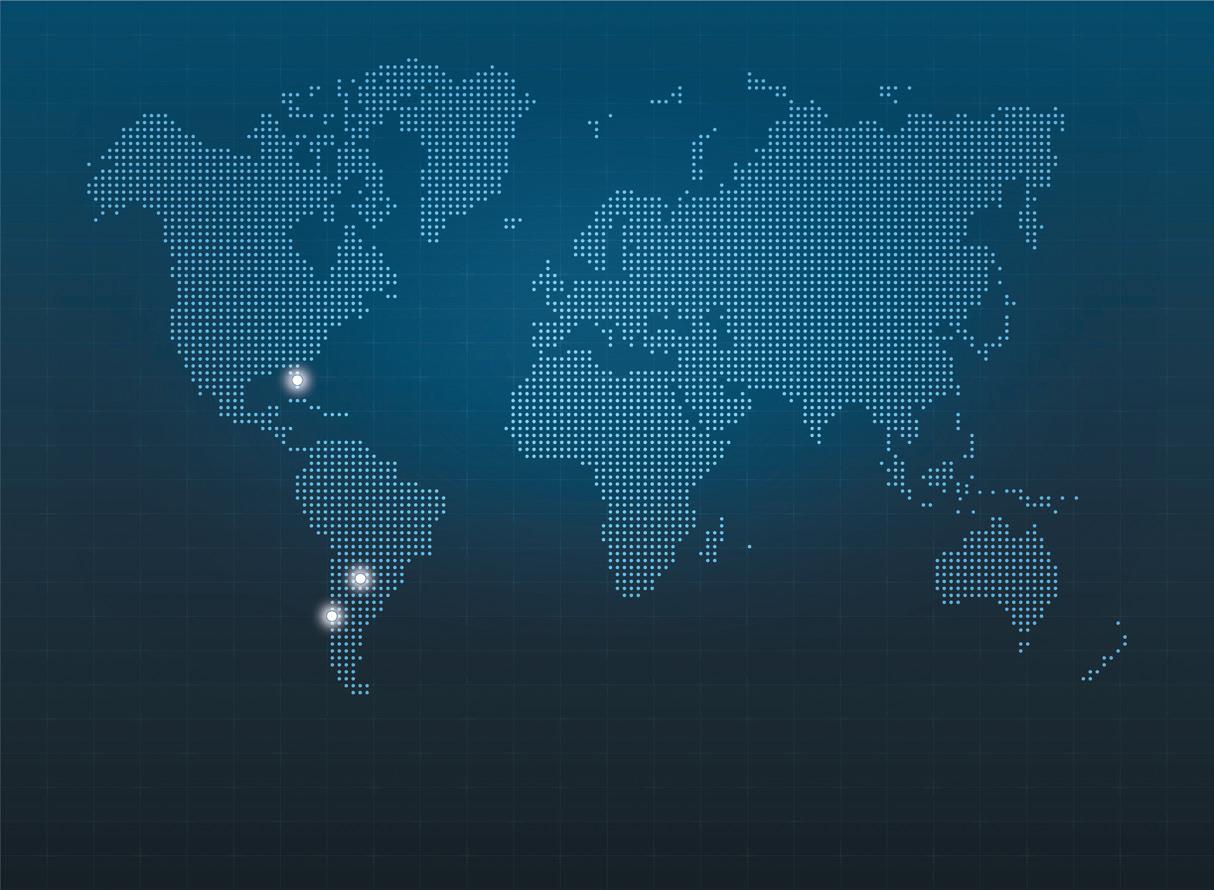

In addition to our focus on mining, we are expanding our presence in the industrial and agricultural sectors, where pumping solutions play a key role in process efficiency. In industry, our equipment optimizes fluid handling in demanding applications, improving productivity and reducing operating costs. The agricultural market for technical irrigation requires efficient, robust equipment that is adapted to specific conditions. Thanks to our experience in pumping solutions, we offer equipment that maximizes performance and guarantees high reliability, contributing to the sustainable development of both sectors.
From a territorial perspective, the company has strengthened its presence throughout the country, enhancing customer service in different regions while advancing our international expansion. We currently operate in the lithium industry in Argentina and are taking our first steps in other global markets. With a manager based in the US, we are exploring new opportunities with a view to positioning ourselves as a global player in advanced pumping solutions.

Finally, we are working to strengthen our corporate governance by incorporating practices that ensure transparent, ethical decision-making aligned with the interests of our stakeholders. With this strategy, we reinforce our commitment to the mining industry, the industrial and agricultural sectors, and digital transformation, ensuring our relevance and leadership in the years to come.



We move what matters with sustainable OUR We move what matters with



PURPOSE sustainable solutions for the planet. PURPOSE sustainable solutions for the planet.


We develop high-value pumping solutions, combining specialized engineering and a deep understanding of our customers' needs.

To be a leader in sustainable and reliable pumping solutions, contributing to the development of the industry, its communities, and the environment.
We put people first, act with environmental awareness, and engage with communities with respect. Because our purpose only makes sense if we make a positive and lasting impact.
We are driven by quality, not as a standard, but as a way to generate real value in every solution we deliver.
We believe in strong relationships based on collaboration and ongoing commitment to those who trust us.
We take the impact of our actions seriously, always seeking to contribute to our customers, employees, and the environment.
We innovate in a practical way, seeking simple solutions to complex problems, with agility and technical expertise.
We take every promise seriously. What we say, we do. What we do, we do well. And if we fail in any way, we address it with transparency and commitment.
Nothing is ever completely finished. There is always a way to do it better, and we are excited to find it.
Editorial Committee
•Ricardo Vogt B., Director
•Alberto Campos V., General Manager
• Mª Fernanda Vásquez C., Head of Marketing
Photographs
• VOGT S.A. photo archive.
• Vogt family photo archive.
• Images acquired from iStock for illustrative purposes in this work.
• Images generated artificially using artificial intelligence tools for illustrative purposes in this work.
Design
•FactoriaPublicidad.cl
Printing
•Imprenta Feyser Ltda.
Todos los derechos reservados. Queda estrictamente prohibida la reproducción total o parcial de este libro, por cualquier medio o procedimiento, incluyendo la fotocopia, la digitalización o el tratamiento electrónico, sin la autorización previa y por escrito de VOGT S.A. Publicado en Chile, año 2025. All rights reserved. No part of this book may be reproduced, stored, or transmitted in any form or by any means—whether electronic, mechanical, photocopying, recording, or otherwise—without the prior written permission of VOGT S.A. Published in Chile, 2025.

